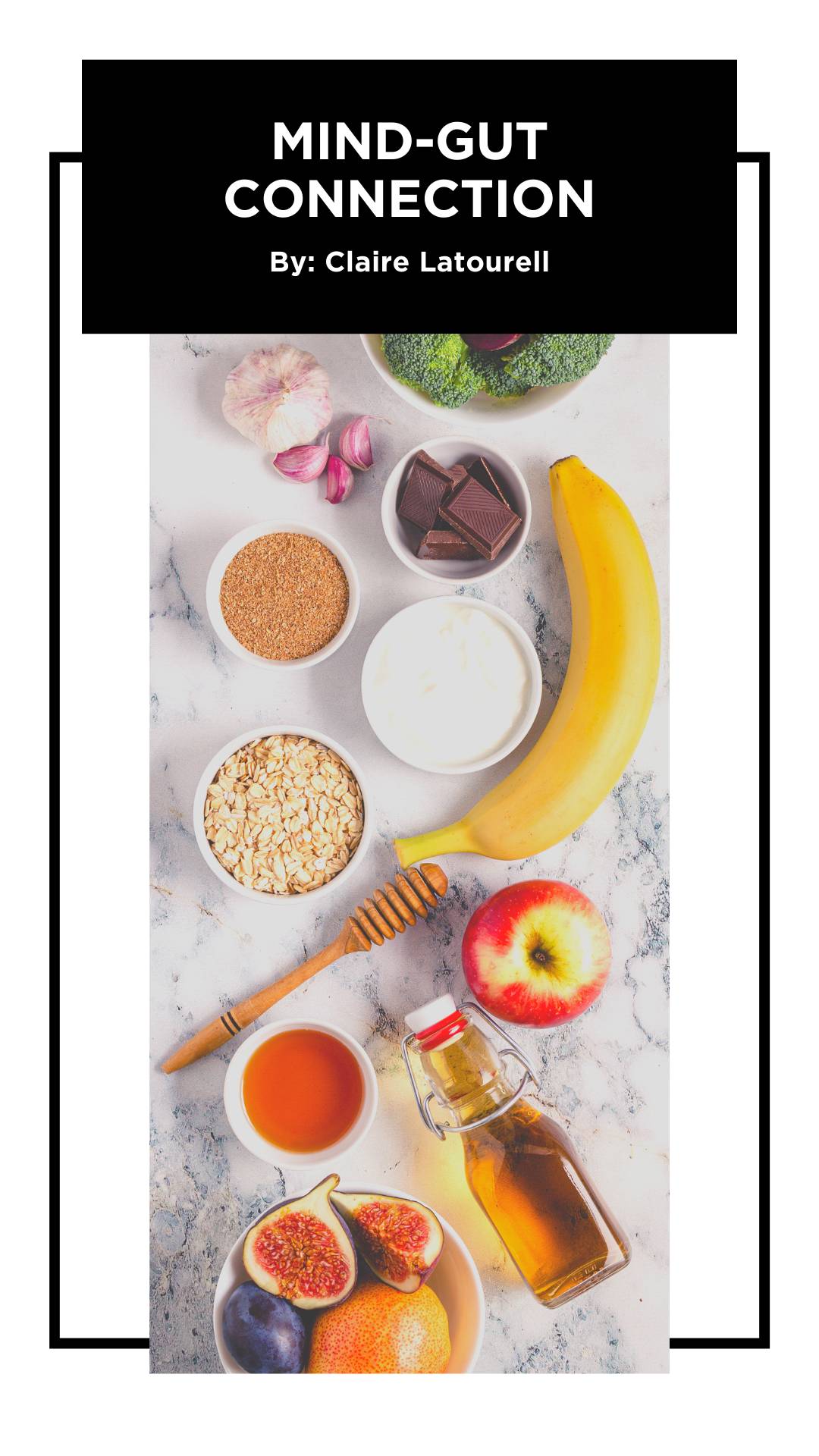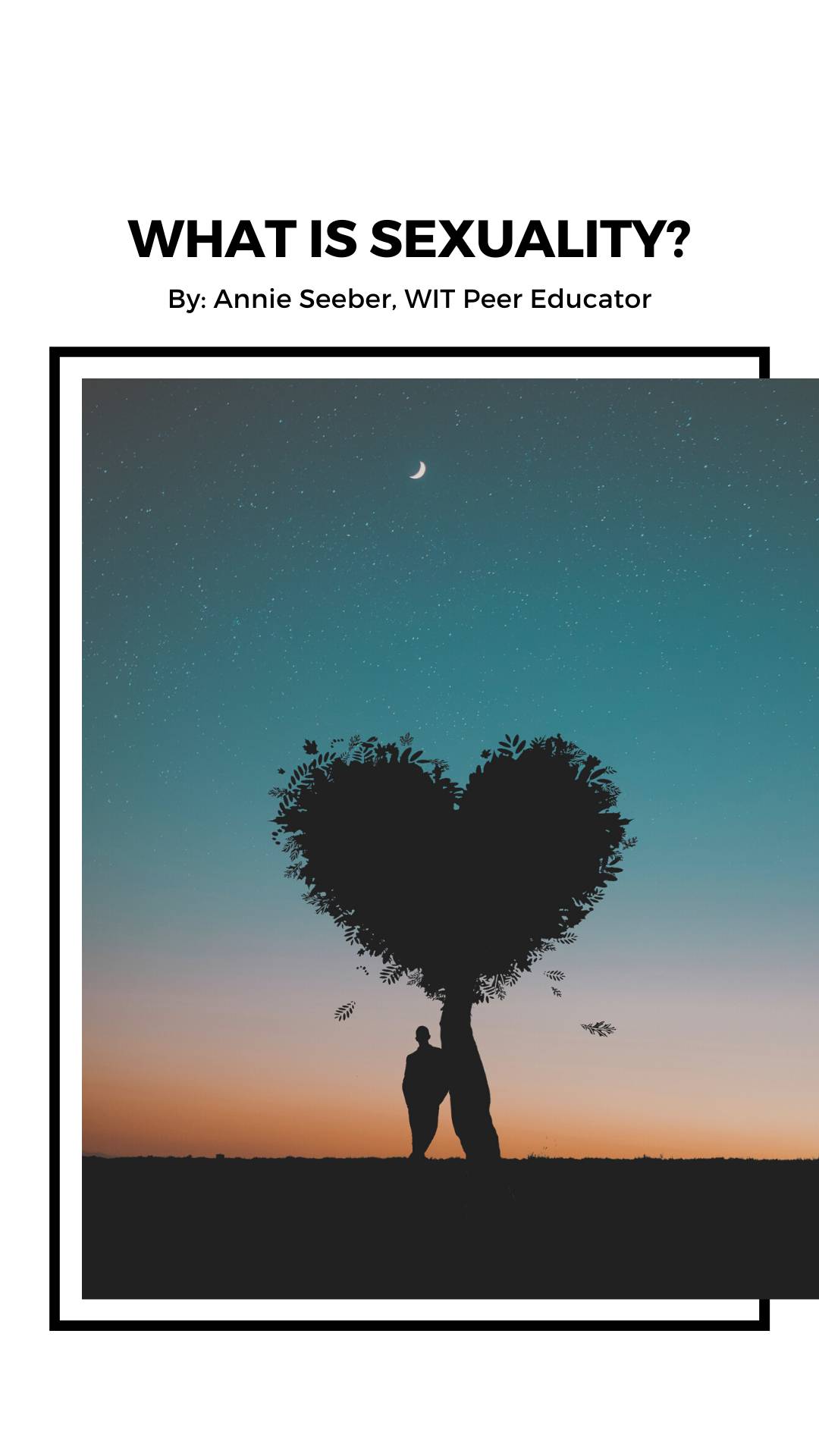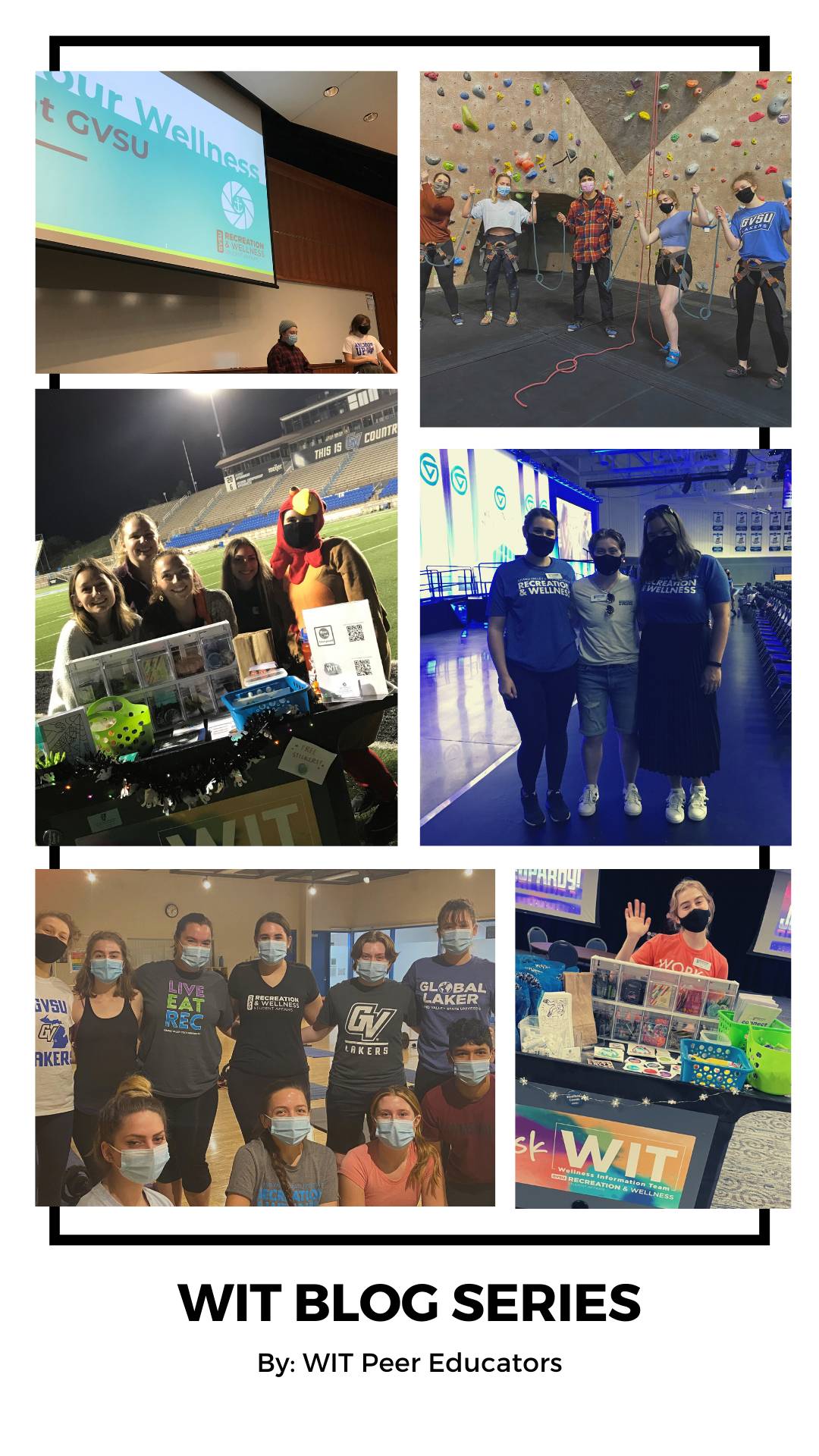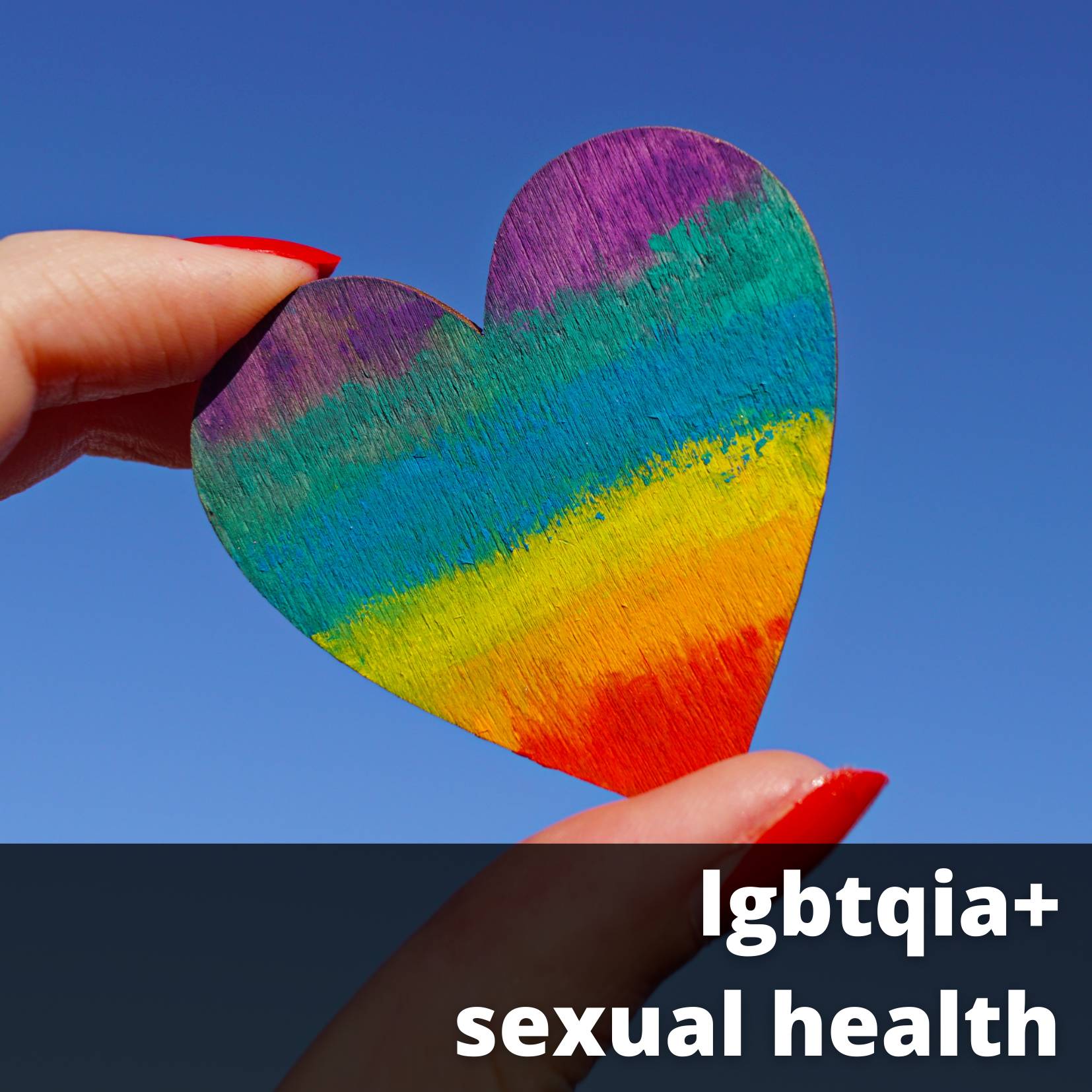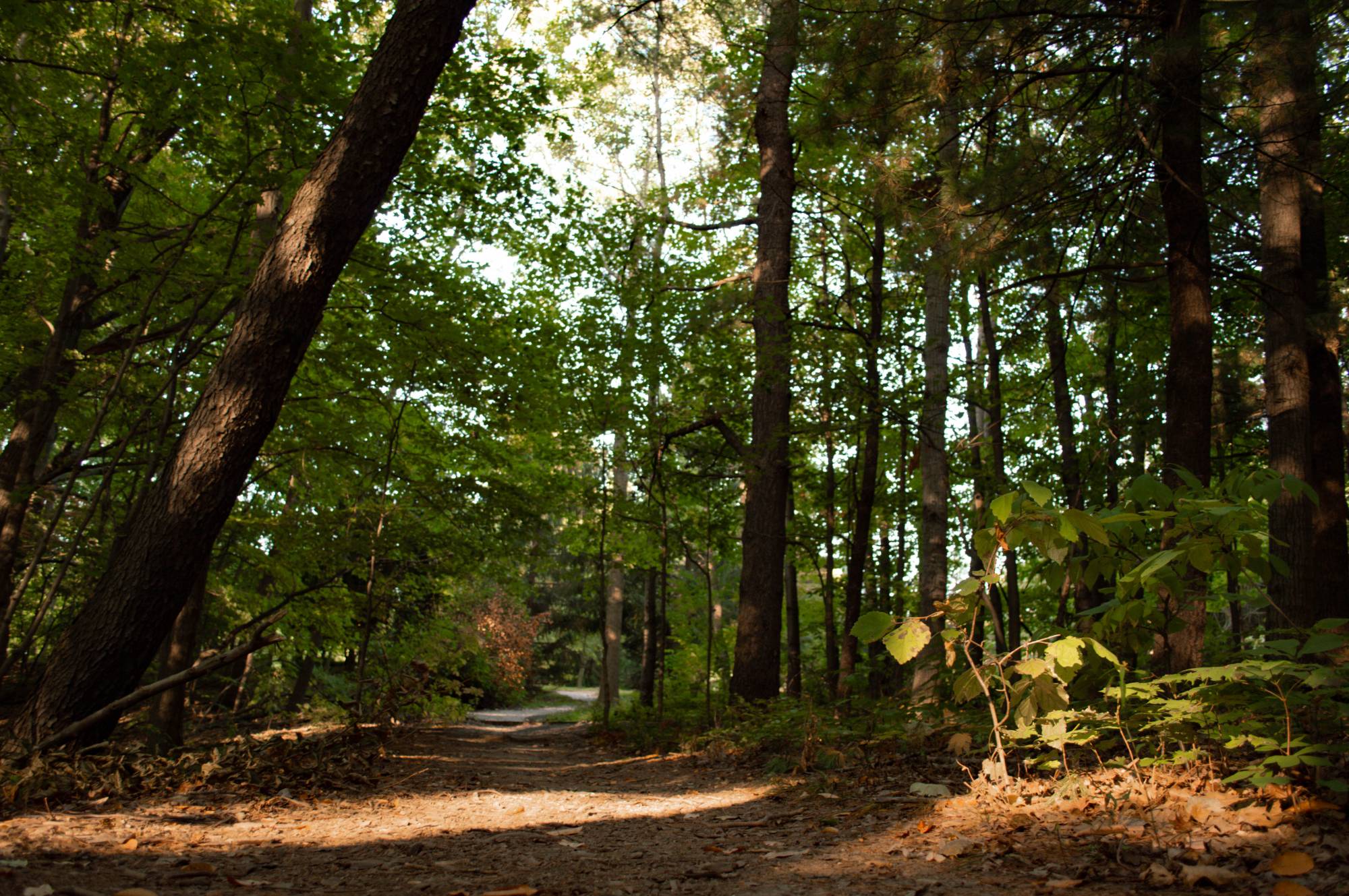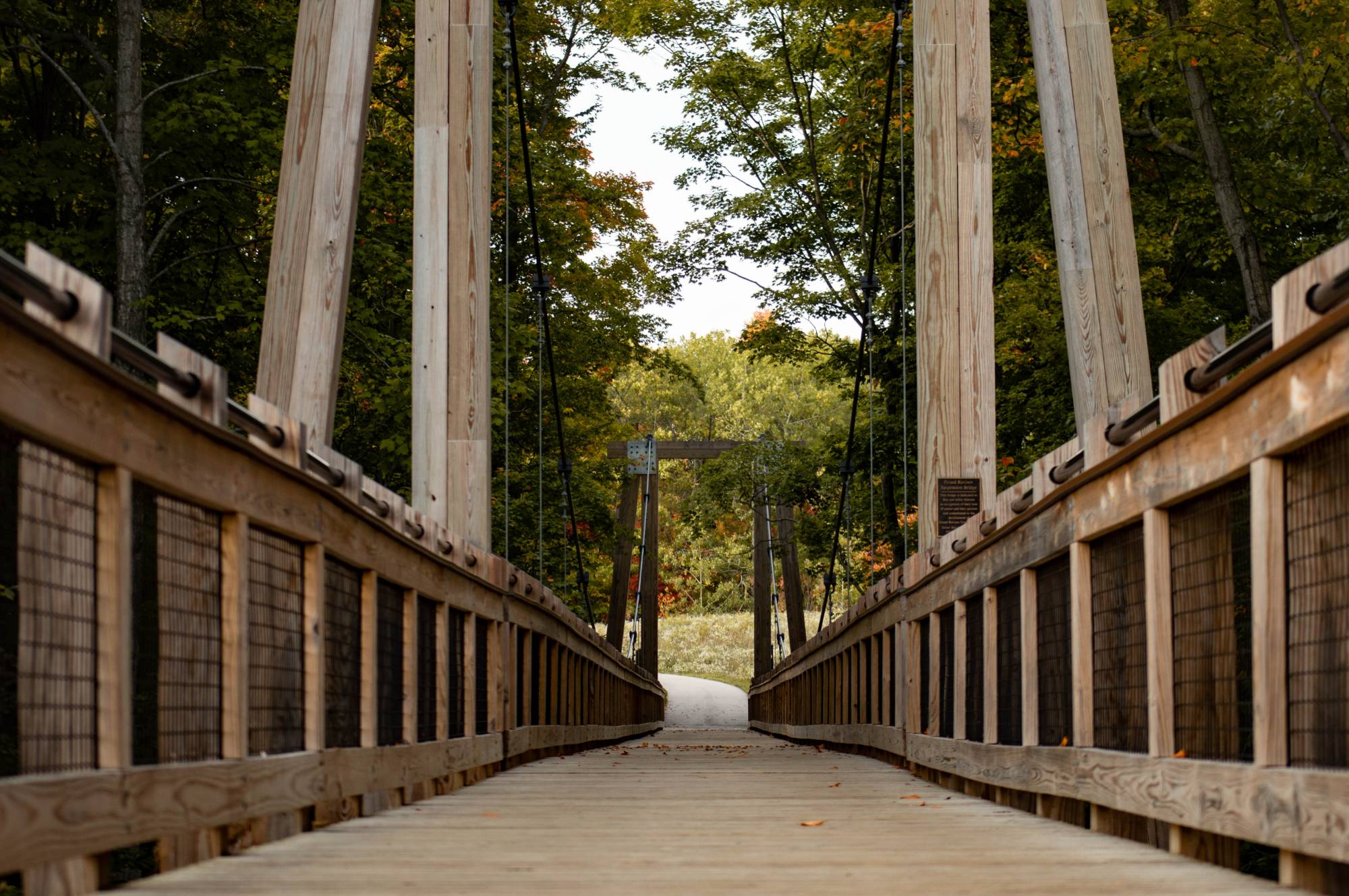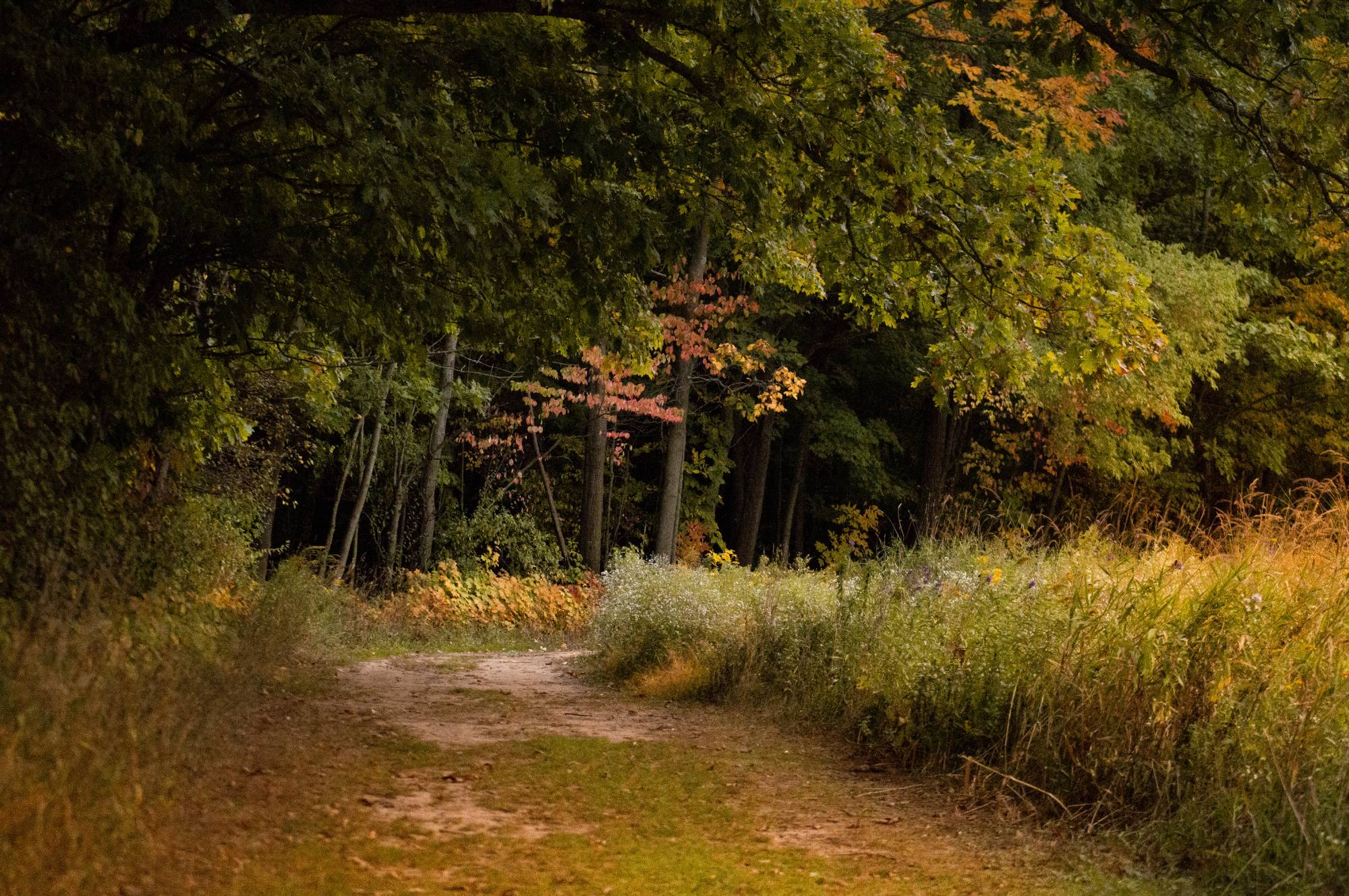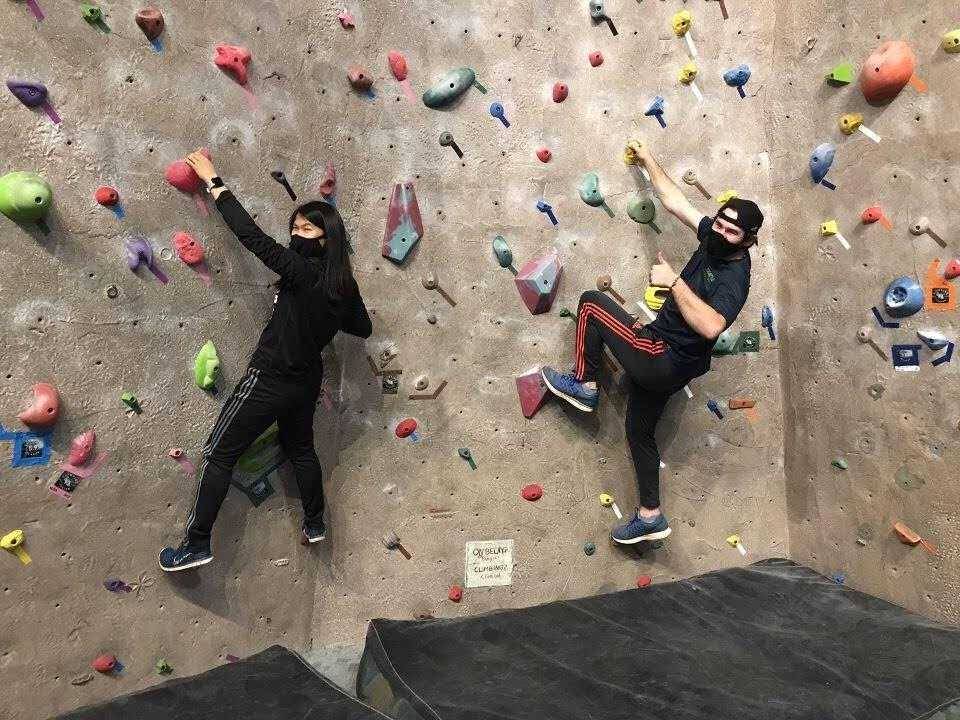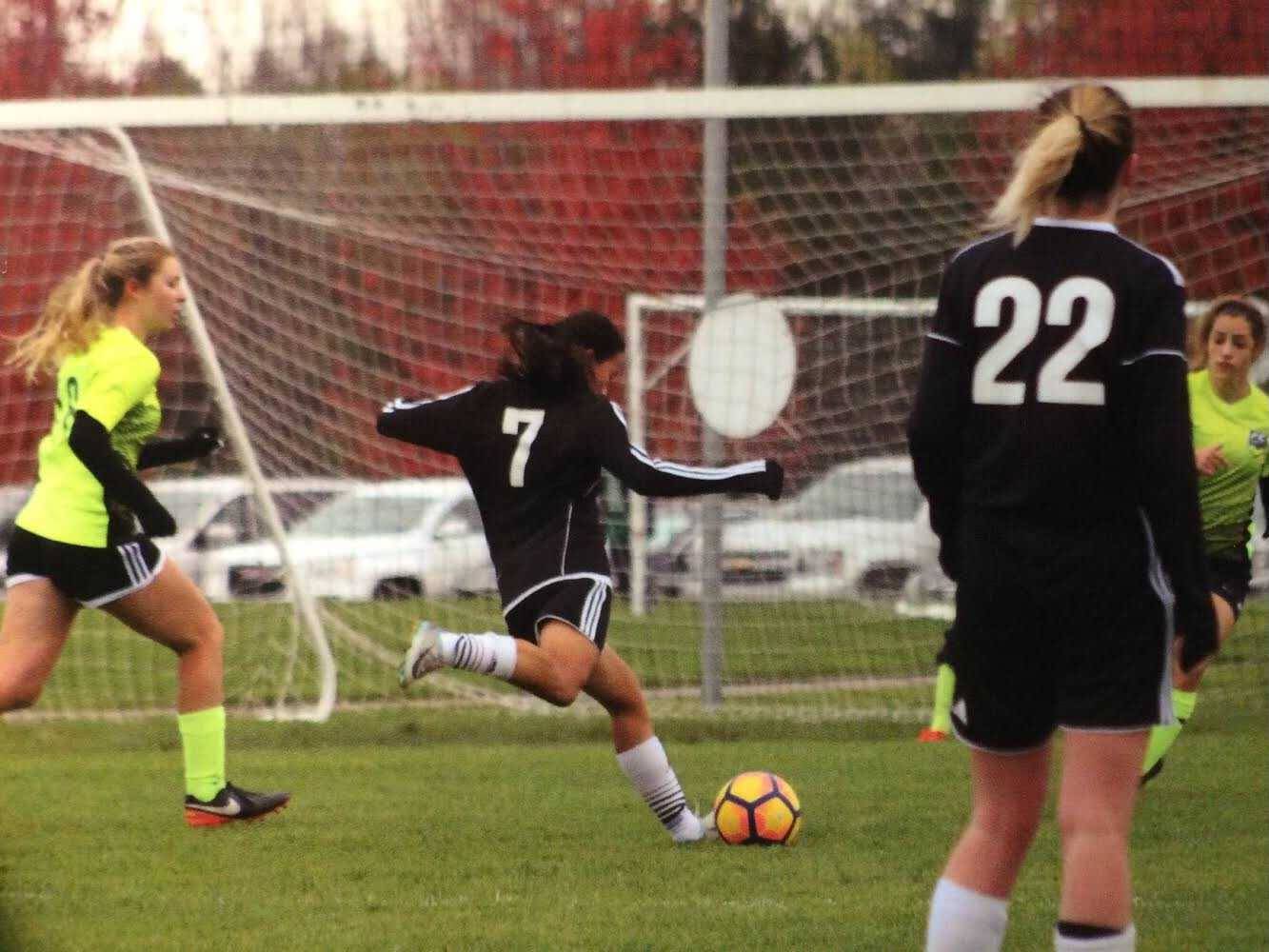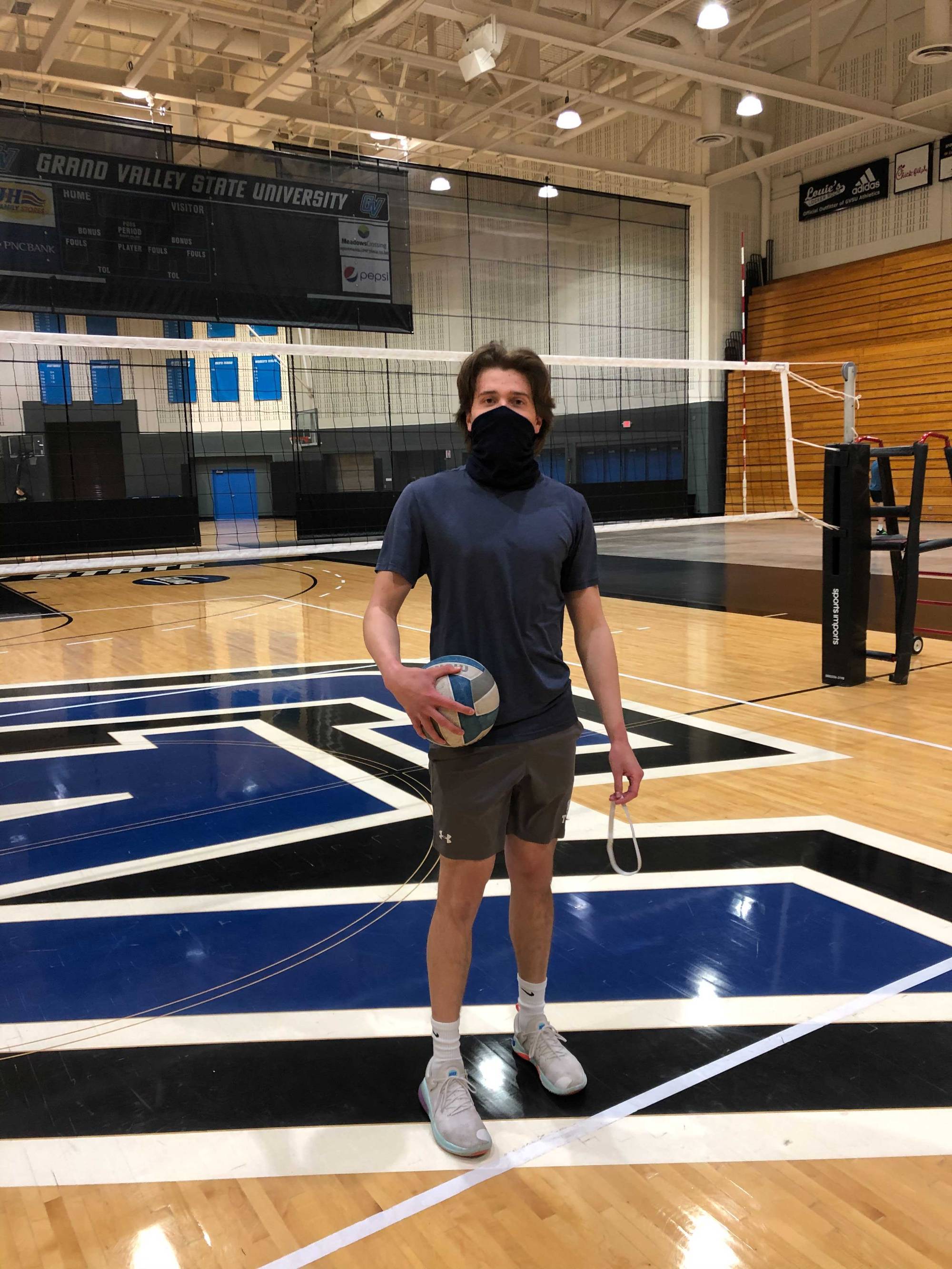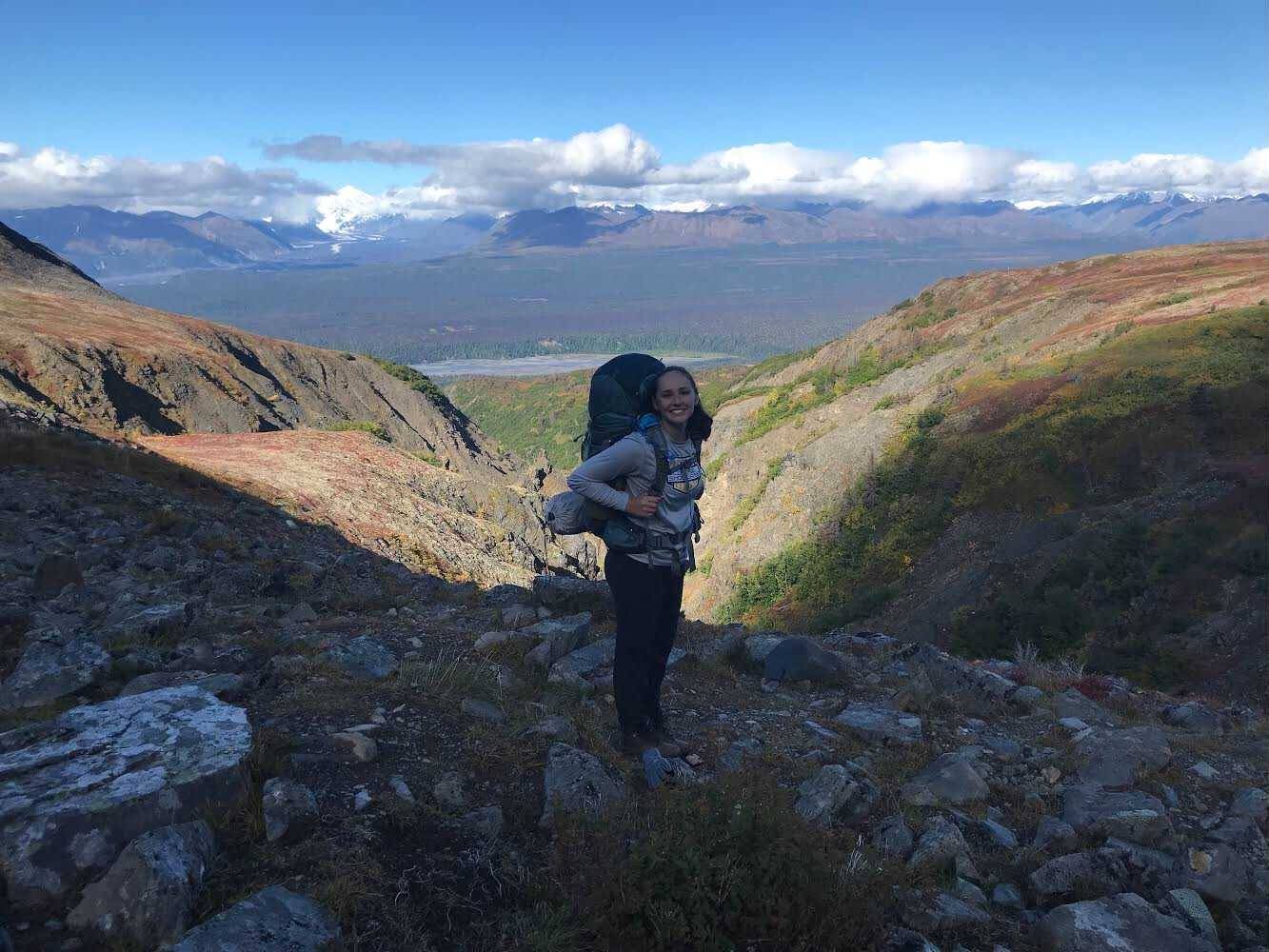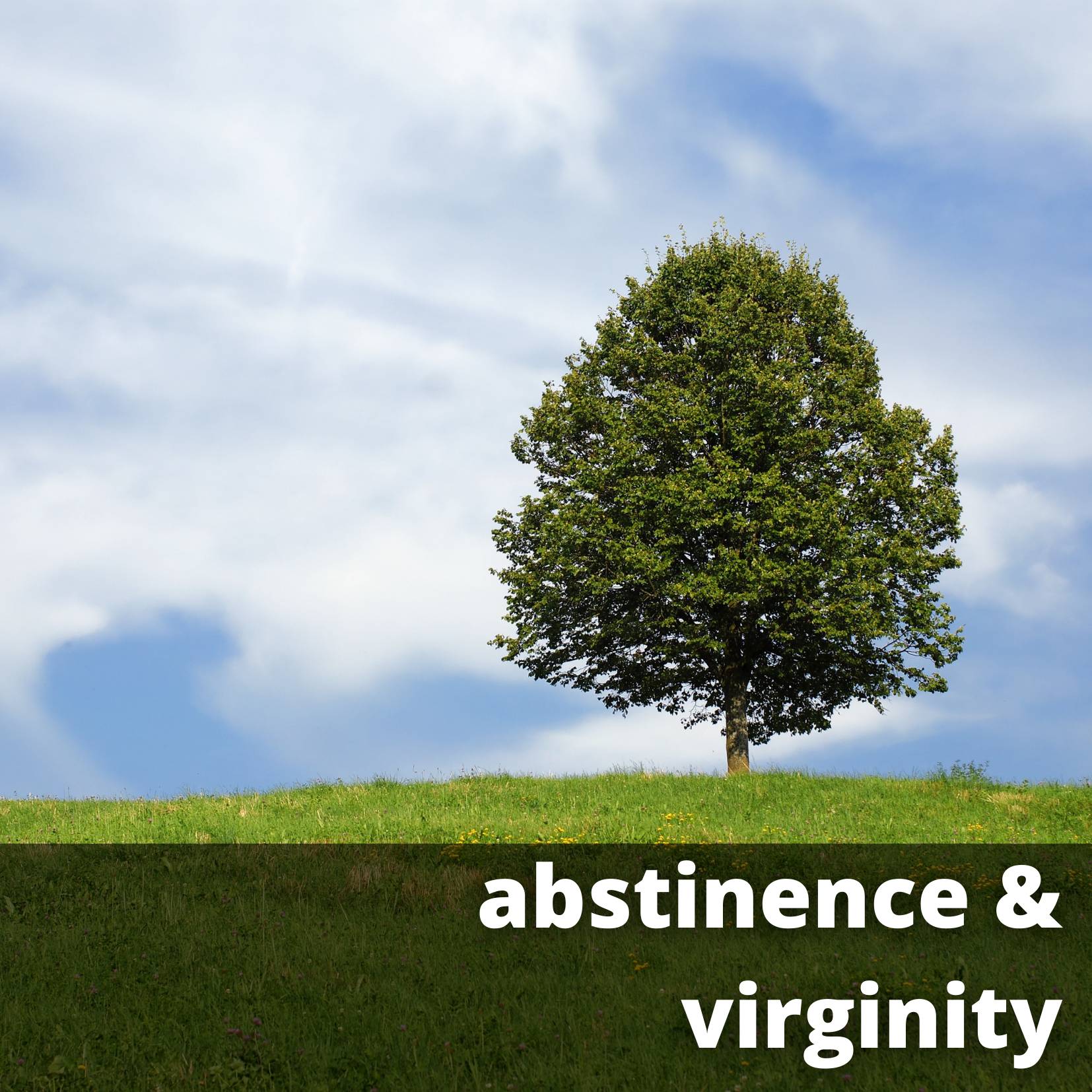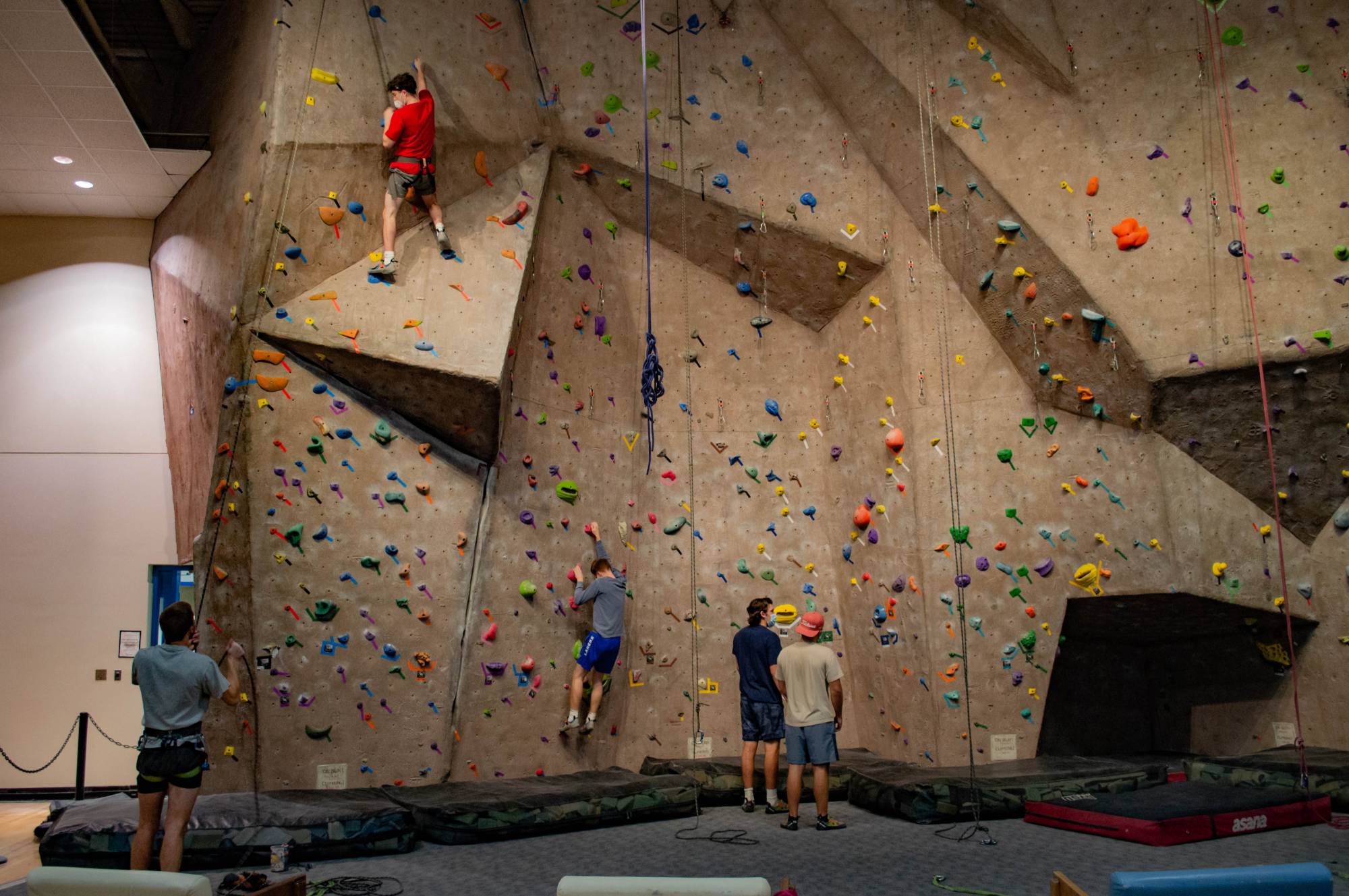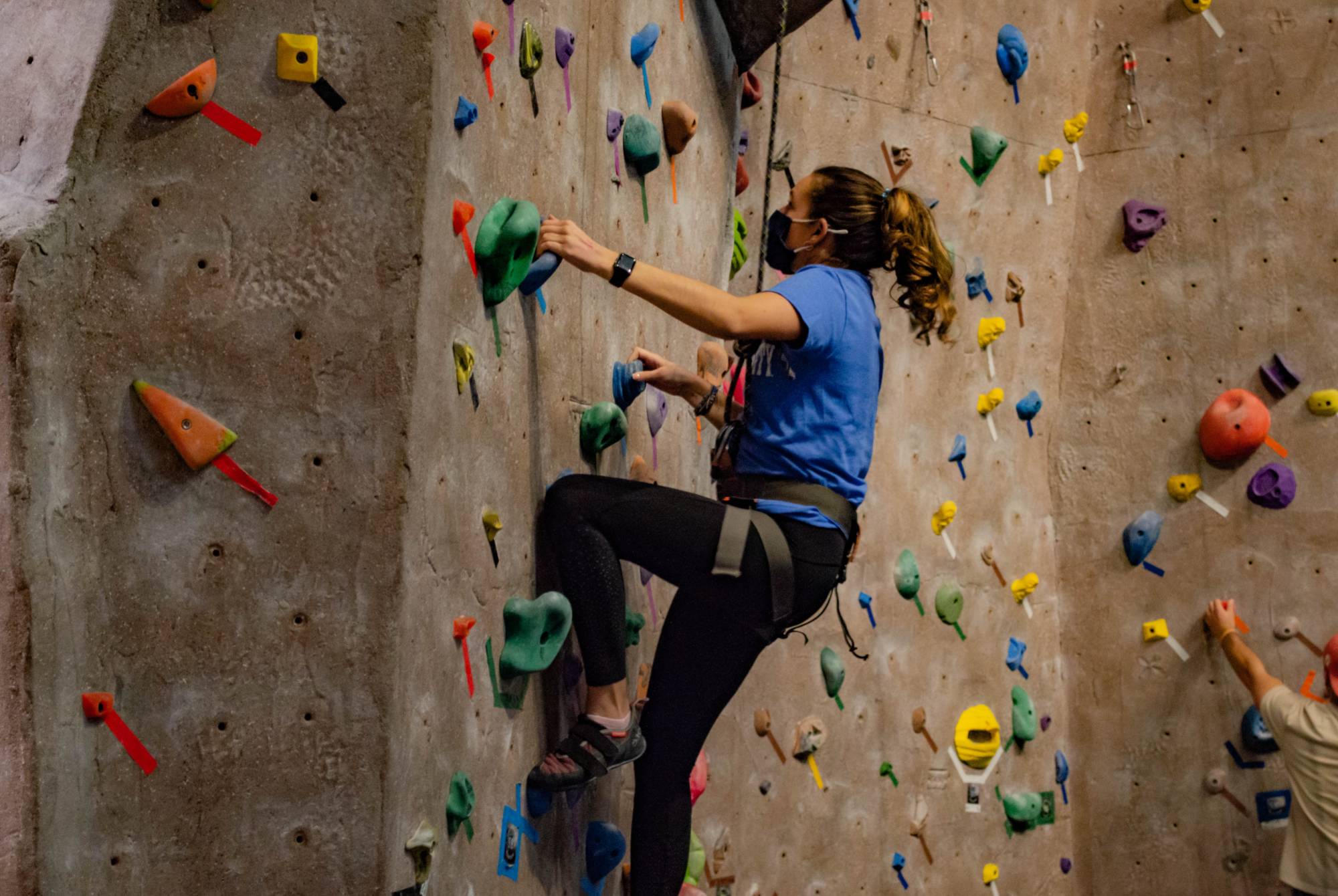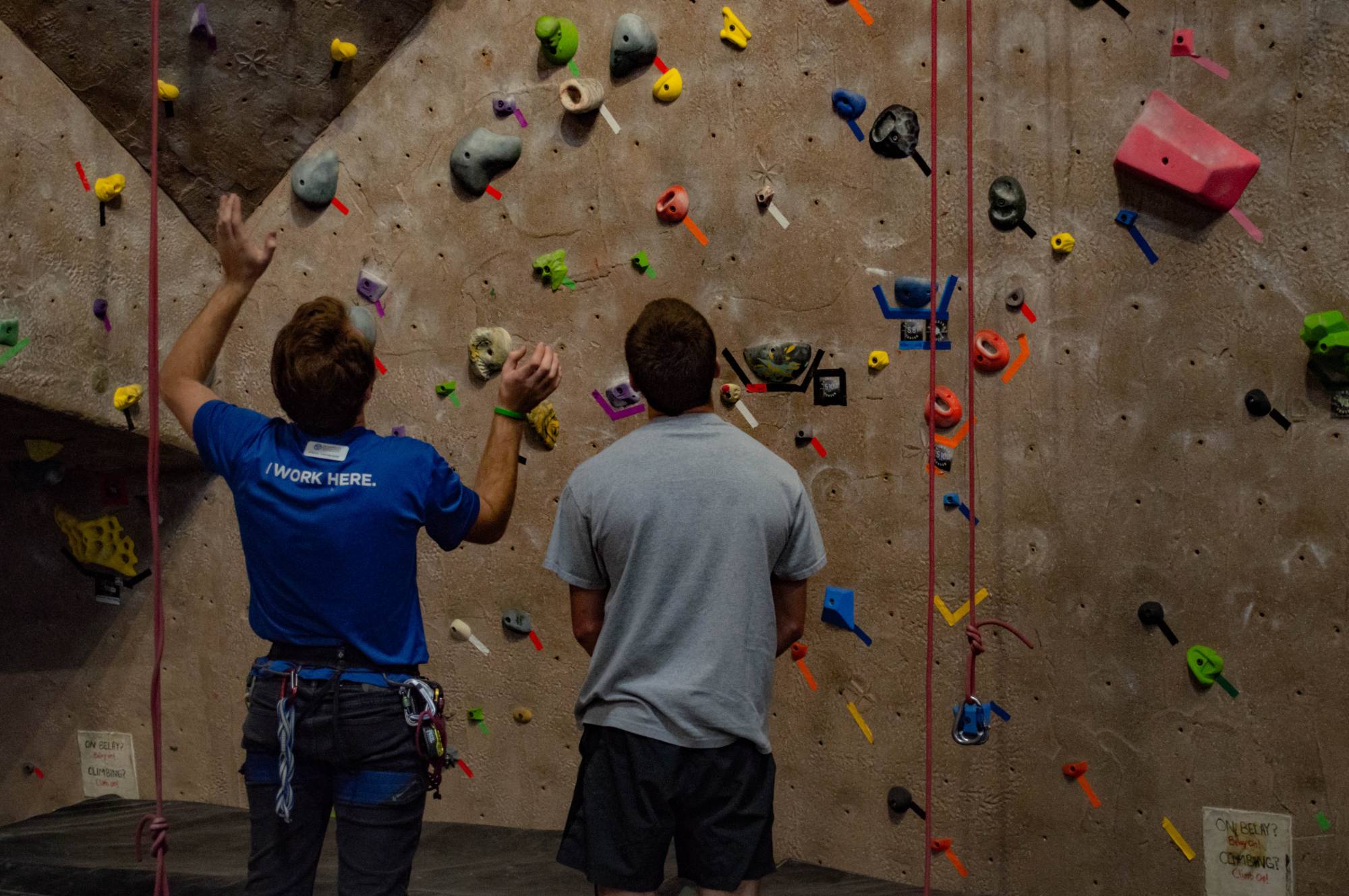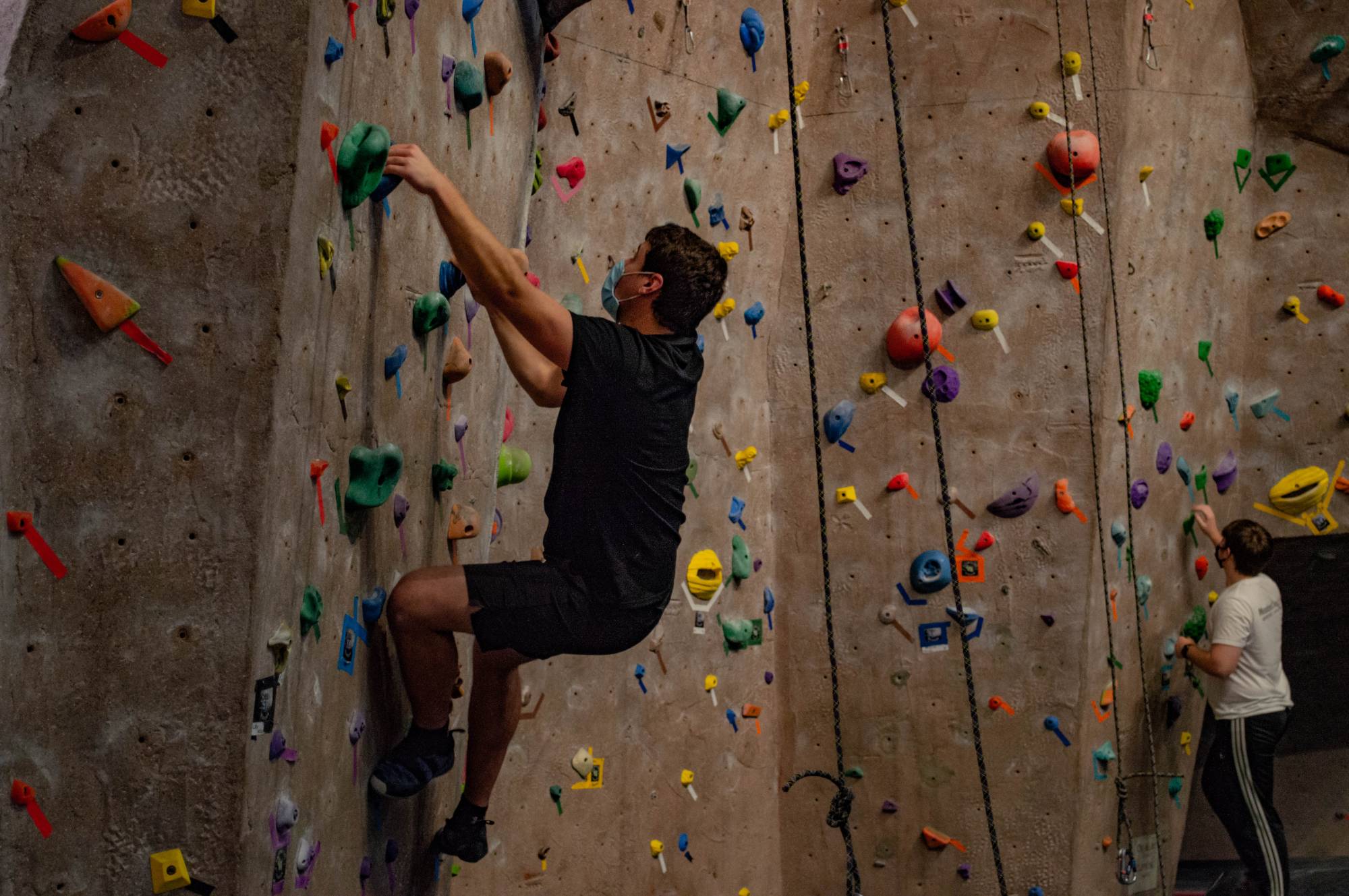Blog
Permanent link for Mind-Gut Connection on January 27, 2022
We’ve all heard the expression, “It’s all in your head,” but is that true?
We experience stress and anxieties through school, work, and/or our social lives, almost on a daily basis. Usually we think about stress-relievers or self-care strategies to help with these feelings, but by learning how these processes work on a physiological level in our own bodies, it can help us discover ways to decrease these negative feelings in a different way. Our mood, emotions, and stress levels tend to be correlated with, and are thought of coming from our brain in the central nervous system. However, our nervous systems consist of more than just the central and peripheral nervous system, which consists of the brain and spinal cord and the nerves, respectively. The enteric nervous system, which governs the gastrointestinal tract, also plays a very important role in communicating with the brain in order to regulate cognition, immunity, hormones, and emotions. By looking into how the gastrointestinal (GI) tract works, it can help bring understanding on how there’s a connection between our brains, our mood and our food.
Gut Bacteria and Our Mental Health
An important aspect for the GI tract to function efficiently, that is not necessarily a part of our own bodies but still very important, is gut bacteria or the microbiome. These little organisms have such a large impact not only on the enteric nervous system, but the central nervous system as well. On the intestinal level, the gut flora can prevent dysfunction in the gastrointestinal tract and affect the nutrient availability in the food we eat. In a study conducted on ‘germ free’ animals, the findings supported that gut flora influences memory, anxiety, and stress. Stress and inflammation can be closely linked together. Stress can be in response to our body’s ‘fight or flight response’ and releases specific hormones and neurotransmitters which also activates inflammation. Yet, many people, such as students, experience chronic, or long lasting, stress and inflammation, which negatively affects the whole body. Microorganisms in the gut have been shown to decrease inflammation. In these studies, probiotics have also decreased symptoms of anxiety and depression, similarly to prescription medications.
Flawed Gut Bacteria: Help it with Fiber
However, not all microorganisms should be viewed equally and can vary based on diet, medications, environment, or even what season it is. Some common examples of manifestations of a flawed gut that may occur can be bloating, constipation, diarrhea, or cramping. It is important to have specific microbes rather than others to support a healthy GI tract. A very important aspect within one’s diet that can support the gut flora is fiber. Most people only get about half of what their fiber intake should actually be. Fiber is so valuable, as the microbes essentially eat and thrive from it. Fiber is also important for many other different things in addition to gut health such as lowering cholesterol, blood sugar and reducing risk of heart disease.
How to Increase Microorganisms in your Gut
- Increase intake of whole plant-based sources for fiber: legumes, fruits, vegetables, and whole grains
- Incorporate some fermented foods into your diet: yogurt, kombucha, or kimchi, or even supplementing with a probiotic (always ask a healthcare professional before supplementing your diet).
- Get enough sleep: 7-8 hours a night
- Exercise regularly: a few days a week
- Reduce stress
These habits, in addition to gut health, can also benefit your overall health and wellness.
Our Body Systems Work Together
The body is made up of many different systems, but that does not mean they work independently of each other. These systems and processes work together in order to keep our bodies running smoothly. The digestive system illustrates this very well, as it impacts immunity, hormones, mental health and more. Even though it seems like we don’t have enough time and energy to be 100% perfect all the time, little changes in choices can help us in more ways than one.
By: Claire Latourell, WIT Peer Educator
Categories:
General Wellness
Nutrition
Posted
by
Katie Jourdan
on
Permanent link for Mind-Gut Connection on January 27, 2022.
Permanent link for What is sexuality? on January 21, 2022
What Is Sexuality?
Sexuality is a concept that has infinite definitions and forms. Its meaning is abundant, but is often defined by society as something extremely clear-cut and particular. For example, the dictionary defines sexuality as a “person's identity in relation to the gender or genders to which they are typically attracted to.” Sexuality goes much deeper than attraction though.
The Deep Dive
The RecWell webpage “The Facts About Sexual Health,” explores the differences between sexual health, sexuality and sex according to the World Health Organization. “Sexuality is experienced and expressed in thoughts, fantasies, desires, beliefs, attitudes, values, behaviors, practices, roles and relationships.” While sexuality can include all of these dimensions, not all of them are always experienced or expressed at the same time. Sexuality is HUGE and we all have sexuality. You do not need to be in a relationship or engaging in sexual activity to have sexuality, because it is such a broad and fluid concept (remember, your values/beliefs around sex are part of your particular sexuality, too). Sexuality includes our bodies, our hormones, our feelings, our values, our gender identity, our sexual orientation, our relationships, and our culture. (Check out Scarleteen's great blog post that really dives deep into sexuality)! Let's talk about just some of these aspects:
Feelings: Feelings and our emotions have an influence on everything we do in our lives. How you feel about an experience can change future decisions as well as perceptions on the things around you. So naturally, when it comes to sexuality, feelings play a large role. They can make you happy, excited, embarrassed, nervous, eager, anxious, giddy and so much more. It’s important to be in tune with and take care of our emotions (positive and negative!), recognizing them and honoring them when it comes to our sexuality and sexual health.
Hormones: When it comes to hormones, the pituitary gland releases estrogen, progesterone and testosterone. These hormones affect sex drive in different ways depending on the amount of each hormone. Libido, meaning sexual appetite or sex drive, is affected by these hormones. For example, estrogen has a major role in increasing libido, while an imbalance of testosterone, estrogen, and progesterone can decrease libido.
Gender Identity: Gender Identity is how you feel on the inside and how you express your gender to others through clothing, behaviors, and personal appearance. Gender identity shapes a person’s sexuality because who we are influences our own unique sexuality. For example, a person who identifies as a woman may feel confident in their sexuality when they dress feminine, while a different person who identifies as a woman may feel confident in their sexuality when they wear masculine clothing. Even though some people may share certain identities, their sexuality is unique to them.
Sexual Orientation: You may already be familiar with the acronym LGBTQIA+ when it comes to gender identity and sexual orientation, but the two concepts are distinct and different.. Planned Parenthood uses the acronym LGBQQAS (lesbian, gay, bisexual, queer, questioning, asexual, and straight), which specifically highlights sexual orientation. Sexual orientation is who you are attracted to and want to have relationships with. Want to learn more about each of these sexual orientations? Check out this Planned Parenthood article.
Culture: Simply put, culture is the ways or norms of life in a particular population, that are typically passed down from generation to generation. These can be based on geography, nationality, religion, political affiliation and so much more. Sexuality can be influenced by culture because a person may be raised to express their sexuality in specific ways. Culture can also highly influence a person’s specific values and beliefs about sex and sexuality. Being aware of society’s (or your particular cultural) influence can help you understand what your own feelings are compared to what the world is telling you to feel.
How Can I Explore My Sexuality?
It can be easy to find yourself lost in it all, and if you “stray” from what society sees as the “norm,” it is common to feel that something is wrong. Who you love, how you love, as well as a relationship with yourself, can seem all mapped out by the world around us; in reality, the only person able to navigate this journey is you! Like any self exploration, there is not one way to figure out what you like or dislike. A good place to start is by writing down what comes to mind when you think of your own sexuality. Remember, sexuality is more than just sexual attraction - it involves our emotions, hormones, relationships, identity, culture and more. From there, you could talk to a trusted friend or do some research online. There are many books and podcasts that delve into all things sexuality. An insightful podcast that explores pleasure, identity, sexuality, and healing is, The Sensual Self Podcast with Ev’Yan Whitney. Ev’Yan Whitney is a sexuality doula who helps people explore their sexuality! Another way to explore your sexuality is to experiment with self love. This can come in many forms and is not strictly sexual for every person. For example, a person may feel physical attraction and enjoy holding hands, hugs, or cuddling. This is a good way to find what feels good to you, so you not only learn what you like, but communicate that with future partners if you wish. There are many more ways to explore, so make it your own and do what works best for you! Grand Valley also offers many resources. The Milton E. Ford LGBTQ+ Resource Center, located in Kirkhof, has many programs and events regarding all things sexuality. There are always new events coming up, which you can find on their website or in person at their office.The Gayle R. Davis Center for Women and Gender Equity has lots of programming around healthy relationships and preventing gender-based violence. And, Recreation & Wellness has lots of information on our website - WIT peer educators can answer questions and we have lots of resources for safer sexual health, no matter your sexuality!
Be You!
Sexuality and exploration can feel daunting at times, but know you are not alone. Discovering the things you enjoy, the way you like to be loved, and the way you love others can take some time. The journey is for you and each path is individually beautiful and unique. You got this!
By: Annie Seeber, WIT Peer Educator
Categories:
Sexual Health
Posted
by
Katie Jourdan
on
Permanent link for What is sexuality? on January 21, 2022.
Permanent link for Explore Wellness with WIT in Winter 2022 on January 10, 2022
“Wellness” has become a bit of a buzzword lately. We’re bombarded with ads for wellness products, we see the term tied to fad diets, and we’re told to buy items in order to practice self-care. But, do we really need all of that to be well? Unfortunately, it feels like the word “wellness” is being used to market consumerism rather than what its true meaning is...
According to the National Wellness Institute, wellness is a life-long journey; "a conscious, self-directed, and evolving process of achieving full potential.” And if you look even bigger, the Global Wellness Institute says wellness is “the active pursuit of activities, choices and lifestyles that lead to a state of holistic health.”
There’s no purchase necessary when it comes to wellness. (But, there may be some reading and learning!)
Nowadays, a lot of us want short and simple information that we can read quickly and keep scrolling. But, there are some topics that require just a little more attention than a social media post.That’s why our WIT peer educators are going to be writing blog posts this semester to dive deeper into topics of general wellness, nutrition, sexual health, and rest. All of these areas can help you on your well-being journey.
If you want to check out previous posts written by the team, we’ve got plenty on the RecWell blog already (you can filter the posts by topic!). This is also where the new posts will show up each week - or you can just click the link on our Instagram stories each week.
Follow along with us this semester as we focus on what wellness really means, how we can improve our lives, and why learning about these topics is so valuable!
By: Ryleigh Emelander, MPH Candidate, Health Promotion Assistant and Katie Jourdan, Student Health Promotions Coordinator
Categories:
General Wellness
Nutrition
Rest
Sexual Health
Posted
by
Katie Jourdan
on
Permanent link for Explore Wellness with WIT in Winter 2022 on January 10, 2022.
Permanent link for Hello Summer! on April 23, 2021
Part of our Sex-Ed Series
Happy summer GVSU! We can’t believe this semester is already at its end. This winter we have been so excited to bring you all weekly content for our first ever Sex Ed Series, because we think this information is so important for everyone to know. All of us on the WIT Peer Educator team are so passionate about sexual health, and we hope that these blog posts over the past 15 weeks have sparked interest in you all to learn more. Now that we’ve made it to the end of the Sex Ed Series, we want to leave you with a sex-positive and empowering recap of everything we’ve touched on this semester so you can have the safest and most fun summer possible!
It’s Nothing To Be Ashamed Of
Many people are uncomfortable talking about sex, but these
conversations are so important for normalizing sexuality, as well as
sexual autonomy. Shame and embarrassment are closely related and are
both due to the lack of cultural acceptance and the taboo surrounding
sex and masturbation. It is so important for kids, teens, and adults
to receive proper sex education to prepare them for any and all future
sexual encounters they may have. Overcoming the associated shame
and stigma is the first step to owning your own sexuality and
having a great sexual experience.
In the Mood
Next, is embracing your own desires. As you become more
comfortable with your sexuality, you can learn to explore these
desires. Whether you’re with a partner(s) or by yourself, sexual
pleasure is about understanding your own sexual needs, and knowing
the right ways to satisfy them. When it comes to sex, it’s not always
about penetration, but it is always about what makes you feel
good! Here are some ideas to get you in the mood:
- Foreplay: Foreplay helps warm up your bodies for the fun to come - physically, mentally, and emotionally. This is the time to build up the sexual tension and desire between you and your partner(s) to have the best, most pleasurable sexual experience possible.
- Masturbation: Touching yourself in the comfort of your own home is the best way to explore your body and find what you like (or don’t)! Masturbation is not only a fun way to pass the time, but it lets you take your sexual pleasure into your own hands--literally!
- Sex Toys: Whether you’re being intimate with your partner or having a solo sesh, sex toys are a great way to add some spice to life! Before buying toys, it's important to know what places and techniques you enjoy when masturbating so you know what kinds to get. Check out Planned Parenthood’s information on sex toys.
- Trying Out New Erogenous Zone: Erogenous zones are those places on your body that feel ~extra~ good when touched. Places like ears, neck, nipples, inner wrists, the vaginal or penile region, and inner thighs are some common ones that could be fun to explore!
- Porn: Watching porn can help some individuals feel more empowered and less stressed. It can also give ideas of some fun things to try in bed.
Some people believe that because they’re menstruating that they have to give up sex for a week, but that couldn’t be less true! There are SO many benefits of having sex on your period, like period cramp, headache and migraine relief, shorter periods, natural lube, and an increased sex drive. Period sex can be a fun way to make the most of your time of the month in the bedroom, so don’t be afraid to embrace your sexuality and add some spice to your sex life!
Pain During Sex
Feeling some sort of pain
when engaging in sex? It’s called dyspareunia, and it's not
uncommon, but it's important to know what’s going on down there:
- Pain For Vulva Owners: The muscles of the pelvic floor play a big role in sexual function and sensation. Sometimes these muscles can tense up during arousal, resulting in the same sort of pain as period cramps. Other causes of dyspareunia could be vaginal dryness, a yeast infection or urinary tract infection, irritable bowel syndrome, or STI’s.
- Pain For Penis Owners: There are many possible reasons for pain during sexual activity, but most common are excessive friction, urinary tract infections, prostatitis, or STI’s.
A one-time pain during sex is not normally a cause for worry, but if pain during sexual activities is a common occurrence, then it is highly recommended that you see a health care provider. While it can be embarrassing or uncomfortable to talk about your pain, for most people this is not a lifelong concern, and getting treated can have you feeling better in no time.
Stay Safe
When engaging in sexual activity with someone besides yourself,
it’s good practice to use some method of protection to prevent
pregnancy (if that’s a goal of yours) and transmission of STIs.
- External Condoms: covers the shaft of the penis or toy (have some fun with different flavors or glow-in-the-dark condoms!)
- Internal Condoms: sits inside the vaginal canal
- Dental Dams: small sheets of latex or polyurethane plastic that cover the genitals to protect you during oral sex
- The Pill: an oral contraceptive containing hormones to prevent ovulation. This is 99% effective with perfect use and 91% with typical use.
- The Implant: a rod surgically inserted into the upper arm that releases progestin to prevent ovulation. This is 99% effective.
- The Patch: looks similar to a bandaid that sticks onto your skin and delivers hormones into your bloodstream to prevent ovulation. This is 99.7% effective with perfect use and 93% effective with typical use.
- The IUD: a tiny T-shaped device inserted into the uterus by a healthcare provider to prevent ovulation. This is up to 99% effective.
- The Vaginal Ring: a flexible ring containing estrogen and progesterone that you insert into the vagina for 3 weeks at a time. This is 99.7% effective with perfect use and 93% effective with typical use.
- The Shot: an injection of hormones by a healthcare provider. This is 99.8% effective with perfect use and 87% effective with typical use.
- Emergency Contraception: a pill you can take after having unprotected sex, aka the “morning after” pill. This is between 75% and 85% effective.
If you’re looking to get started on birth control, do your research to see what fits you and your lifestyle best. Set up a meeting with your healthcare provider, and make sure to voice your birth control goals: wants, needs, questions, and concerns. From there, you will work together to find the best method for you.
It is important to remember that the birth control methods listed above do NOT protect against STIs, only pregnancy. If you don’t use barrier methods, consider participating in routine STI screenings. Getting tested is no big deal, and if you happen to test positive, it's important to know what next steps to take to keep yourself and your partner(s) healthy.
COVID-19 has affected us and our sex lives for over a year now, but those who are dealing with the stress and trauma from COVID-19 after already having suffered from sexual or relationship violence are some of those individuals being impacted the most. To read more about the connection between COVID and sexual violence, check out the guest blog post from Ariana Deherder, Violence Prevention Student Assistant with the Center for Women and Gender Equity.
Sex and the LGBTQIA+ Community
Sex education in America often excludes
the teaching of LGBTQIA+ identities and relationships, leaving
youths across the country uninformed. As a marginalized population,
LGBTQIA+ people have an even greater need to know about themselves,
their community, and how to safely and consensually participate in
relationships (sexual or otherwise). When looking at the sexuality of
the LGBTQIA+ community, it is best to use a holistic approach. This
view intertwines sexual identity, gender identity, sensuality, sexual
health, and more to have an encompassing perspective on the
individual. We live in such a heteronormative society that sometimes
we say things that negatively effect those around us unintentionally.
Ways that people can be more inclusive and respectful towards the
community are simple, like using “folks” instead of “ladies and
gentlemen,” or using the term “partner” instead of “boyfriend” or
“girlfriend.” This is all just a surface level recap, so please read
our “Sex
and the LGBTQIA+ Community” blog by WIT Peer Educator Beck
Lukins (they/them) for an extremely comprehensive and informational post.
Sex and Disability
The World Health Organization
lists three dimensions of disability: impairment, activity limitation,
and participation restrictions. People with disabilities aren’t always
thought of as beings with feelings outside of their disabilities, but
they are not defined by their disability. There are so many myths
surrounding sex and disability, such as people with disabilities
can’t have sex, only have sex with each other, or that they don’t need
comprehensive sexual education. But, people with disabilities are
sexual and sexy people too! As an able-bodied woman I cannot speak on
any experience, so here is a list of educators and influencers to
follow on Instagram that have lived experiences with disability and sex:
- @crippingupsex
- @andrewgurza
- @rvbyallegra
- @aaron___philip
- @the_feeding_of_the_fox
- @thedisabledhippie
- @carson_tueller
Sexual Rights Are Human rights
Planned
Parenthood uses FRIES to
explain consent: Freely given,
Reversible, Informed,
Enthusiastic, and Specific. When it
comes to sexuality, it is a human
right to decide freely on all matters related to your body, as
well as freedom from coercion, violence, or intimidation in all sexual
encounters. The definition of sexual
autonomy is that you alone have complete control over when, with
who, and under what circumstances you engage in any sexual activity.
Recognition that all individuals have the right to determine what’s
best for themselves is key to living a safe, sexually satisfying
life. Even if you decide to never
engage in sexual activity, it is important to stay educated in
sexual health and the rights you have because there is SO much more
than the physical acts of sex. No matter what you decide to do with
your sex life, its entirely up to you! Of course, when with a
partner, their consent
is required too. When it comes to your sexual encounters, no one knows
what's best for you better than you! Self-determination over your body
leads to an empowered sexual experience.
With all of this being said, we hope you have learned some valuable information, and that you continue to stay informed about sexual education. Happy summer & see you in the fall!
By: Camryn Lane, WIT Peer Educator
Categories:
Sexual Health
Posted
on
Permanent link for Hello Summer! on April 23, 2021.
Permanent link for Sex and the LGBTQIA+ Community on April 21, 2021
Sex and the LGBTQIA+ Community
Part of our Sex-Ed Series
More than 1 in 3 LGBTQIA+ Americans faced discrimination of some kind in the past year, and this discrimination has moderately to significantly psychologically impacted 1 in 2 LGBTQIA+ folk. This discrimination can occur in any sector of a person’s life – at school, at work, or within their own personal relationships. Sex education in America often excludes or even prohibits the teaching of LGBTQIA+ identities and relationships, leaving hundreds of youths across the country uninformed. As a marginalized population, LGBTQIA+ people have an even greater need to know about themselves, their community, and how to safely and consensually participate in relationships (sexual or otherwise).
A Holistic Approach to Sexuality
Holistic Sexuality refers to a multi-dimensional approach towards how one views their sexuality. It encompasses more than just a person’s sexual identity; it also includes a person’s gender identity, intimacy, sensuality, sexualization, and sexual health and reproduction. This is helpful because all of these aspects of a person’s body and soul are interconnected and fluid and can change throughout the course of life. This allows for you to have a better sense of yourself and be more confident in your desires.
This holistic approach is also very useful for some members of the LGBTQIA+ community. Asexuality, Demisexuality and Greysexuality are all sexual orientations on the ace spectrum and are often misunderstood or rejected. However, they are all very real and valid identities which may or may not include physical attraction or sex. Sexual attraction or desire is different from a sex drive, or libido. Everyone is unique; some people may have low or high libidos but will choose to act on them differently. Some people are very interested in sex and enjoy having it, while others may not be as interested or don’t enjoy having it. There is no right or wrong way to do it, and no right or wrong way to be.
Inclusive Terminology
Sometimes the words we use can have unintended effects on the people around us. American (and most other) societies have been raised and continue to function on The Binary, which is the concept of a gender structure consisting only of two genders: male and female. This means that almost everything in our world is constructed to fit into one of these two categories, regardless of what it is. Colors, music, jobs, clothes, toys – almost everything can be described as “girly” or “manly”, “pretty” or “handsome”. Everything comes with a predetermined label on it, forcing conformity. Unfortunately, this means that for folks who don’t fit into either of these categories, they are left with a hard decision: to allow themselves to be incorrectly categorized or speak up and inevitably face the challenge of no longer fitting in anywhere. For this reason, inclusive language and acknowledgement of the existence of more than one gender and of same-sex couples is massively important. It helps let LGBTQIA+ people know that they are seen, safe, and welcomed by a particular person or in a particular space.
Some examples of inclusive language include:
- Instead of “Ladies and Gentlemen”, say “Everyone” or “Folks”
- Try not to say ma’am or sir if you don’t know that that is how the person identifies
- Ask about someone’s partner or relationship instead of assuming boyfriend or girlfriend
- Use the terms “people with penises” or “vulva-owners” instead of saying men and women, since not all people who have a penis or vagina will identify as a man or woman
- Introduce yourself with your pronouns and ask other people for theirs
The Acronym: Labels and What They Means
What does LGBTQIA+ stand for? Here are the letters from the acronym and some of the most common labels used in the community.
- Lesbian: a woman who is attracted to other women. The label is also used by gender-nonconforming folks.
- Gay: someone who is attracted to those of their same gender. Can be used as an umbrella term but is also sometimes used to specifically refer to men who like men.
- Bisexual: someone who is attracted to those of their same gender as well as people of a second, different gender. Can be used as an umbrella term for anyone who is attracted to more than one gender.
- Transgender: Someone whose gender identity differs from the one that was assigned to them at birth. Many transgender people identify as either male or female, while others may see transgender as an umbrella term and identify as gender nonconforming or queer. This term is used as an adjective, avoid using it as a noun.
- Queer/Questioning: Queer is an umbrella term to refer to someone who is not straight or cisgender and is increasingly being used as reclamation due to its past use as a pejorative term. Questioning is exactly what it sounds like; anyone who is questioning their gender or sexual orientation and doesn’t yet have or want a label for themselves.
- Intersex: someone who is born with variations in anatomy, hormones or chromosomes that does not fit within the traditional definition of male or female bodies
- Asexual: someone who experiences little or no sexual attraction, or experiences attraction but doesn’t want or feel the need to act on that attraction sexually
-
+
: the plus here refers to any and all other labels
that exist in the community
- Non-binary: someone whose gender identity does not conform to the gender binary
- Pansexual: someone who is attracted to people of any and all genders.
- Cisgender: someone whose gender identity matches the gender they were assigned at birth
- Genderfluid: someone whose gender identity or gender expression varies over time
There are many more labels not listed, but you can find them on this glossary if you’re curious. A label is unique and deeply personal, so know that these definitions (while universally accepted) are not definitive and may mean something slightly different to each individual who uses them.
Increased Health Disparities
LGBTQIA+ youth are at a substantial risk for health disparities related to STIs, unplanned pregnancies, and intimate partner violence. Additionally LGBTQIA+ people are up to 30% more likely to be forced to have sex and up to 5 times more likely to consider or attempt suicide. And because the healthcare system is not designed to support those who do not fit conventional molds, queer people are more likely to avoid going to the doctor and therefore less likely to receive quality medical care. Overall, this means people who identify as part of the LGBTQIA+ community are more likely to need support and education but are less likely to receive it.
Queer Representation
When sex and relationships are talked about in the media, they are often talked about in a way that is harmful to LGBTQIA+ people. In songs, movies, tv shows, and social media, the most common representation we see of sex is heteronormative and cisgendered. This means that what is most often shown or talked about is sex between a straight man and a straight woman. Reality is very different however, and we know that there are many people who don’t fit into that model. A lack of representation and visibility in media when it comes to sex and intimacy is especially dangerous regarding the LGBTQIA+ community. People are scared of what they don’t know or don’t understand, and if queer people are not shown to greater audiences than they can never be understood and accepted as normal.
Helpful Barrier Methods
While the traditional condom barrier method is still used by LGBTQIA+ individuals, there are other less common barrier methods which are specifically used by queer couples. These include the dental dam, latex gloves, and finger cots. These can all be used by anyone of any orientation or gender identity, but currently tend to be most utilized by the LGBTQIA+ community. All the common birth control and contraceptive methods are also still applicable to LGBTQIA+ individuals and couples if they are looking to prevent pregnancy and they are engaging in sexual activity involving a penis/sperm and vagina/ovaries. Safer sex is just as important in the queer community as it is for straight couples, and if you’re interested in how to have safer sex with yourself or with a partner, you can find out more at our other blog posts.
What is Dysphoria and How Can You Overcome It
Transgender and gender-nonconforming (TGNC) individuals often experience something called dysphoria, a medical diagnosis for the significant psychological distress a person feels when their gender identity does not match their sex assigned at birth. To help alleviate this distress, TGNC individuals may choose to pursue transitioning, which is the process of physically, socially, or medically changing their body to align with their gender. One way to do this is with the use of packers and/or breast padding. These prosthetics can also help in the bedroom, where dysphoria can be extremely hindering during a person’s attempt to be physically intimate with themselves or with another person or people. Packers are silicone penises and come in both soft or erect positions and can be worn during the day or during sexual activity. Breast padding are bra inserts or breast forms made of either fabric or silicone. They can come in any color or size (as can packers) and help enhance or create a person’s chest.
Sex Toys and Pleasure
Sex toys are also a safe and helpful way to learn what you like and experiment with your sexuality. They can help affirm gender identity and relieve gender dysphoria and are a great way to keep sex feeling new. Sex toys can also help take the pressure off performance anxieties and encourage new experiences. Keep in mind that sex toys are not federally regulated and manufacturers are not required to be honest in their labeling, so it is best to buy from well-known, trusted sources. The most common materials are silicone, stainless steel, glass, and hard plastic. Not all lubes will work on all materials so make sure you read the instructions before using. Toys should be cleaned before and after every use and should be stored in a cloth or plastic bag between uses to avoid bacteria. If a toy is being shared, change condoms before the toy touches someone else. Additionally, if you are using the toy in more than one location on your own body, you should also change condoms before you use the toy in a different orifice. For anal activities, all toys should have a flared base to ensure it is not lost inside the body - and as the anus is not a self-lubricating area, lube is your friend!
Many couples have their own definition of what sex is, and how they have it. This is particularly true for LGBTQIA+ couples who don’t fit into society’s definition of a traditional couple. Everyone gets to decide what counts as sex for them, and what sex means for them. Make sure you know what you want or what you’re open to before you start something. It’s only fair to yourself and anyone you may be with that you’re in the right headspace. Be open-minded and communicative. Talk with yourself or your partner(s) so you know what’s happening and if everyone is liking it. Lose all expectations; a certain act or position doesn’t have to mean anything, and liking or not liking something doesn’t make you more or less of who you are. And finally, sex is not necessarily all about achieving an orgasm. It’s about finding pleasure and having fun. Not everyone needs or even wants to achieve orgasm – sometimes, having sex is just about the experience of sharing intimacy, learning what you or your partner(s) like, and building a bond.
Know Your Rights
LGBTQIA+ people don’t have all the rights that their straight, cisgendered peers do. However, LGBTQIA+ people do currently have:
- The right to change healthcare providers at any time and for any reason
- The right to accurate and uncensored information
- The right to affordable healthcare
- The right to free speech and free press
- The right to autonomy
A Personal Note on Freedom and Expression
I would like to take a moment here to address something. During this article, I have talked about things that range from “vanilla” (by which I mean relatively accepted within the realm of the normal societal mainstream) to things more traditionally unconventional. Therefore, I want to end this blog with a short aside on the LGBTQIA+ community in relation to sex. Sometimes, when people think of gay people or trans people, they may think of sodomy or of how or who that person engages with in sexual activity. I want to note that when people make this association, they are perhaps unknowingly engaging in a homophobic implicit bias against queer people. They are not acknowledging the full humanity of the queer person - only their sexual nature and ways in which they find the queer person to be different or lesser than them. Alternatively, I would also like to note that perhaps part of the reason so many LGBTQIA+ people feel free to express themselves in ways that some people find deviant or “unnecessary” is that we as a people have had to fight simply to be ourselves. Some of us have come to a state of mind where we know who we are and love who we are, and refuse to hide or change any part of ourselves any longer - and no longer care what other people think.
By: Beck Lukins (they/them), WIT Peer Educator
A note from the author: If anyone has any questions, curiosities, or would like more information (even if it’s something I didn’t touch on), please feel free to reach out to me! I am a completely open book when it comes to my story and my identity, and I have spent several years now working to better educate myself and others. As a queer and trans student here at GVSU, I take great pride in being a source of information for people both in and outside the LGBTQIA+ community, and I am always happy to respond to folks. My email is [email protected] , or if you are not a GVSU member you can contact me through my Instagram @beck_lukins. Cheers!
Categories:
Sexual Health
Posted
by
Katie Jourdan
on
Permanent link for Sex and the LGBTQIA+ Community on April 21, 2021.
Permanent link for Hiking: A Minute of Planning Can Save You Hours of Doing on April 20, 2021
You found the perfect trail, but you're not sure what to take? Packing the “essentials'' - plus a couple of other things - will ensure your trips go as planned, and more importantly, you are prepared for whatever the trail may throw at you - including getting lost, a storm, or even (but hopefully not!) an injury on the trail. Even though it may seem unnecessary in the moment, packing the correct items can potentially save your life if things go astray. When packing for hiking it's important to pack not much more than the essentials to avoid increasing weight in your backpack too much. The hardest part is finding the perfect balance between what's necessary and what would end up taking up space and weight. Much of what you bring is determined by the length and location of the hike. For example, a short hike (1-3 miles) may require little gear and can be done without a pack at all, and longer hikes (5-10 miles) may require much more.
There are an unlimited number of factors to consider before setting something into your pack. The crowdedness of the trail, for example, could determine whether or not you bring a source of fire and shelter -there could be fellow hikers there to help in case of an accident. A trail map or map of the area will be of enormous help if you find yourself lost. Most trails will have the map posted at the trailhead,snapping a quick picture with your phone can help you remember where to go. Ultimately it's up to you (the hiker) to decide what to bring, but there are some items that should be heavily considered.
Backpack
Aside from food and water, the most important piece of gear to
bring on the trail is a backpack. It will hold all your gear and keep
your hands free when hiking on difficult terrain. Whether you are
selecting an existing backpack to bring or if you’re in the market to
purchase one, there are a couple things to consider.
- Size - Backpacks are usually measured in liters (how many liters
each pack can carry).
- 10 liters or less: Super lightweight and used for either running or quick fast hikes. Perfect for the shorter hikes (~2 hours). Less comfortable and don’t hold as much.
- 10-20 liters: Tends to be the most popular size for day hikes; a balance between weight and captivity. Can be comfortable depending on the brand and quality. A generic school bag is about this size.
- 20 liters through 80 liters: Built for long days on the trial with the ability to carry lots of gear. Usually used on backpacking trips of multiple days in a row on the trail. Usually pretty comfortable and can hold quite a bit, but are more expensive and heavier.
Now that you have the perfect pack selected for your hike, what do you put in it?
Food and Water
When packing food and water for the hike, it's important to bring
enough. It’s better to have more than you need in case of an injury or
a wrong turn leaves you out on the trail longer than expected.
Water is the most essential item to bring with you on the trail. Dehydration on the trail is very common and can be a deadly mistake if not taken seriously. For shorter day hikes, bringing around 32oz of water should be enough. Increase the amount of water you bring based on the distance and time you plan to spend on the trail. The temperature on the day you plan to hike will also influence how much water you take. As the temperature increases, so should the amount of water you bring. The amount of water you bring also depends on you, you know your body better than anyone else so pack as much water as you see fit.
Food with a high amount of calories will give you the most energy per gram of food, essentially more bang for your buck. Foods that do not to be refrigerated and are light weight are preferred. Items like beef jerky and granola bars are a staple trail food and for good reason, because they offer a good balance of protein and calories while being small and lightweight. It’s best to stay away from food that’s high in sweets, such as candy bars or bakery items. These simple carbohydrates have high amounts of sugar that will leave you feeling tired later on down the trail.
Clothing and Layers
Nothing is worse than being stuck out on the trail and either a
rainstorm or cold front comes and not being prepared. When choosing
what clothes to bring, it's important to first check the forecast to
give you a general idea of the type of weather you may experience.
Wearing layers or bringing clothing that can be layered is the best
option for anything mother nature may throw at you. The basic layering
system consists of a tighter thermal layer first with, an insulation
layer in the middle. A raincoat or windshell is great for wearing on
the outermost layer, as it will keep the weather out and the heat in.
For warm temperature hikes, something lightweight such a tank top or
t-shirt would be great. Packing a raincoat in your bag could be a
lifesaver if the weather were to turn sour. A hike boot or hiking shoe
offer superior traction compared to a regular tennis shoe on the
trail. Wearing thick and supportive socks can help prevent blisters
along with other foot pain. Speaking of socks,nothing is worse than
walking in a wet cold pair of socks, so if you're going somewhere with
water or with high heat, throwing an extra pair could prove to be useful.
Pack Away!
Now that you have a basic idea of what to bring, you can start to
adapt your own idea of what to bring. Deciding what to take and what
to leave is often a difficult task. Countless factors can determine
whether you leave something at home or put it in your bag, and
ultimately it's up to you, the hiker to determine this. We hope we’ve
helped you prepare, at least a little bit! You can also learn more
through the 7
Principles of Leave No Trace. Happy hiking!
By: Owen Dingledine
Categories:
Outdoor Adventures
Posted
on
Permanent link for Hiking: A Minute of Planning Can Save You Hours of Doing on April 20, 2021.
Permanent link for Why do you participate in IM Sports? on April 14, 2021
Intramural (IM) Sports are a great way to get involved at Grand Valley, and it’s not only us who would tell you that! Students will testify to the great things happening in Recreation & Wellness, including their experiences with IM Sports. Three of the students we interviewed got involved with IM Sports their first year of college, but it’s never too late to join in on the fun.
ANNIE
Sophomore; played on 8 teams for a total of 17
games in 2020-21.
“Intramural Sports are one of my favorite things that I have done
on campus lately”
-
When did you first get involved with IM Sports?
I got involved with IM Sports right away during my freshman year by making an IM soccer team with high school friends. I even met new friends through the IM Sports platform when we needed more players. I also joined my housing team’s beach volleyball team to connect with other students that lived with me. -
What IM Sports do you participate in, which is your
favorite, why?
So far I have participated in soccer, tennis, beach volleyball, badminton, indoor volleyball, spike ball, corn hole, and online fantasy sports league (football and basketball) that started this year. My favorite sport has to be soccer but volleyball is a close second. I played soccer for clubs and high school before coming to college and I always enjoy the chance to play soccer. I never played volleyball until my first beach volleyball game and I intensely loved the challenge of using my arms instead of just my feet. -
What makes you excited to play your favorite sports?
My favorite thing about playing all these sports is getting my friends active and involved in the sports I love. I also get to make new friends along the way and have a fun break from homework and studying. I love being able to play games with other students here at GV that also like to be competitive and have fun. -
Why is it important to play IM Sports right now?
IM sports are so important to be involved in (especially right now) because it is an opportunity to be active on campus and meet new people who have similar interests. Staying fit and being active can happen at the gym and on trails around campus, but these organized sports are a great way to add more sport specificity in one’s life and widen your skillset. -
How do IM Sports help you reach your
exercising/wellbeing/physical goals?
IM sports have definitely helped me reach my step goals, but they also allow me to connect with friends which makes me happy. If we only meet once a week for a game, I am still very excited to play with them again. As many of my classes are by myself, I don’t get to see the same people every week. My sports allow me to have somewhat of a routine and make life seem more normal. I have found that IM sports are not only helping me reach my physical goals but my mental health goals are being achieved too by being outdoors and spending time with others.
OWEN
Junior; played on 8 teams for a total of 23 games in 2020-21
“I have so much fun just spending time with my friends and
competing in a friendly environment”
-
When did you first get involved with IM sports?
My freshman year -
What IM Sports do you participate in, which is your
favorite, why?
Out of all of them, I enjoy playing soccer the most, but the team plays better in sand volleyball so that’s a close second. -
What makes you excited to play your favorite sports?
Spending time with my friends having fun and laughing. Also, the competitive nature of playoffs and some regular-season games are a lot of fun. -
Why is it important to play IM Sports right now?
To stay active and enjoy time with friends and other students on campus. -
How do IM Sports help you reach your
exercising/wellbeing/physical goals?
Soccer and football have made me get in better shape because of all the running. It feels great.
MARTA
Junior; played on 8 teams for a total of 14 games in 2020-21
“I have definitely enjoyed IM sports and recommend it to everyone”
-
When did you first get involved with IM Sports?
I got involved in IM sports during the first semester of my freshman year. The very first team I joined was a random soccer team as a free agent. I was a little shy and intimidated for not knowing anyone, but I ended up becoming good friends with a majority of the team. I have been doing IM sports every semester since! -
What IM Sports do you participate in, which is your
favorite, why?
I try to participate in as many IM sports each semester as I can. This semester, I have been a part of sand volleyball, indoor soccer, indoor volleyball, and table tennis. In past years, I have also played spike ball, kickball, softball, ultimate frisbee, and futsal. I think my favorite would have to be sand volleyball because I love diving for a ball and landing in the soft sand. Sometimes I just wish it was a bit warmer! -
What makes you excited to play your favorite sports?
The reason I enjoy IM sports so much is because of the people I play with. I enjoy meeting new people on my team and also reconnecting with old friends through the sport. I love the friendly competition that takes place, especially when I am playing against a friend. I also loved trying new sports because it was a great mix of trying new skills but also knowing my teammates had my back if I ever messed up. -
Why is it important to play IM Sports right now?
I think playing IM sports right now is important because it gets you active, you are surrounded by new friendly faces. It is easy to be stuck at home with online classes so this is a great opportunity to get out and do something fun with a group of friends. It is also a great chance to meet new people and make some long-lasting friendships. It is also a great time to try something new and to branch out to new hobbies. -
How do IM Sports help you reach your
exercising/wellbeing/physical goals?
All of the IM sports I have participated in have definitely made me stay on my feet. I feel like I am getting the exercise I want in a fun, competitive way, rather than working out by myself in the gym. It does not only help me physically but keeps my mind sharp as well as I have to react and communicate quickly.
THANK YOU to all of our participants and student employees. We hope you had fun, tried a new sport, and made some new friends! If sports do not interest you, we have many other areas for you to get involved with here at Recreation and Wellness.
By: Caleb Danielson
Share your story: gvsu.edu/rec/stories
Visit IM Sports website: gvsu.edu/rec/imsports
Categories:
Sports
Posted
on
Permanent link for Why do you participate in IM Sports? on April 14, 2021.
Permanent link for Sex and Disability on April 14, 2021
Part of our Sex-Ed Series
*Please note that the writer identifies as able-bodied, so she has included a list of influencers and educators to follow on Instagram that have lived experiences with disability and sex.
In the United States, 61 million adults live with a disability. According to the CDC, a disability is “any condition of the body or mind that makes it more difficult for the person with the condition to do certain activities and interact with the world around them.” According to the World Health Organization, disability has three dimensions:
- Impairment in a person’s body structure or function, or mental functioning; examples of impairments include loss of a limb, loss of vision or memory loss.
- Activity limitation, such as difficulty seeing, hearing, walking, or problem solving.
- Participation restrictions in normal daily activities, such as working, engaging in social and recreational activities, and obtaining health care and preventive services.
People living with disabilities are often grouped into a single population, even though there is a wide variety of experiences with disabilities. Socially, those with disabilities are seen as asexual beings without feelings, desires, and needs outside of their disability, all 61 million of them. But let’s set the record straight: a disability does not define an entire person. People with disabilities can be and are sexual beings!We want to debunk some myths about sex and disability.
Myth #1 - People with disabilities can’t have sex.
American society often tends to define sex in one way:
penis-in-vagina intercourse. However, there is no such thing as real
sex, right sex, or wrong sex. Sex is not exclusively penis-vaginal
penetration; it is so many
different things, because every body and everybody is different.
Sex is for everyone and anyone who chooses to participate - as long as
it’s consensual.
Depending on a person’s disability, there may be some planning
involved in making sure everyone is comfortable during sexual
activity. For example, some people with physical disabilities choose
to use devices like a
liberator wedge to help with body support during sex. Or, as
another example, there might need to be discussions about when or how
to have sex if chronic pain or fatigue are a part of a person’s
disability experience. Having open and honest conversations to make
sure you are getting what you need is vital - whether you have a
disability or not!
Myth #2 - People with disabilities only have sex with each other.
Nope! A person is not their disability, and it does not decide
who they can and cannot have a sexual relationship with - as long as
it’s consensual, safe, and enjoyable!
Myth #3 - People with disabilities aren't sexy.
It’s important to understand that attraction is based on a
connection between people, not a
beauty or “sexy” standard our society has set. (Westernized
beauty standards could be another whole blog series!) What people find
sexy differs and is usually more than strictly someone’s outward
appearance. It could be their sense of humor, smell, intellect, touch,
love of dogs, and so much more. Although, wearing something sexy can
also make a person feel more confident and sexier too, so it’s okay to
explore that too! For individuals with physical disabilities, finding
certain clothing that makes you feel sexy and confident can be harder,
but it’s possible! An online shop called Elba London
creates bras for people with mobility or dexterity limitations, and Intimately has adaptive bra and
lingerie options, too.
Myth #4 - People with disabilities do not crave sex.
There is a common misconception that individuals with
disabilities are child-like and therefore do not desire sex or have
sex; this is simply not true! Sexuality is a vital part of being
human. It
is physical, emotional, intellectual, social, and cultural.
Every person experiences sexuality in their own way, but they
experience it with or without disability. No matter who you are, the
decision to have sex is a personal choice, and whether you crave sex
differs from person to person.
Myth #5 - People with disabilities don’t need sex education.
Understanding sexual health is extremely important, whether you
choose to have sex or not. Being aware of STIs,
pregnancy, contraception, and overall safety is key. All people should
have access to resources and tools that make sex safer, healthier, and
enjoyable if they choose to engage. We know the U.S.
has not done a good job of providing comprehensive sex
education, and we’ve done even worse in providing specific age and
ability appropriate resources to people with disabilities so that they
can experience fulfilling sex lives. Also, it’s important to note that
comprehensive sexual education can better
equip individuals with disabilities to resist sexual violence, abuse
and coercion in social spaces. Sex education is for everyone!
Learning from those with Lived Experiences
Let’s repeat this because it is so important: people with
disabilities are sexual beings!
While, as an able-bodied person, I cannot understand having a disability and navigating sexuality and sex, I can learn from those with lived experiences. Here is a list of some amazing educators and influencers that speak directly to their experiences with sex and disability that you should follow if you want to learn more!
Follow these people on Instagram:
- @crippingupsex
- @andrewgurza_
- @rvbyallegra
- @aaron___philip
- @the_feeding_of_the_fox
- @thedisabledhippie
- @carson_tueller
While I spoke a lot about physical disabilities, you could also take a peek at this Australian blog post on cognitive disability and sexuality if you’re interested in learning more.
By: Annie Seeber, WIT Peer Educator
Categories:
Sexual Health
Posted
on
Permanent link for Sex and Disability on April 14, 2021.
Permanent link for Sexual Abstinence, Virginity and Sexual Decision Making on April 6, 2021
Part of our Sex-Ed Series
As per 2018 National College Health Assessment statistics, 74% of GVSU students have engaged in sexual activity which means 26% have not. So in today's post we are going to discuss sexual abstinence and virginity.
Abstinence
Sexual-abstinence
means refraining yourself from participating in sexual activities.
The interpretation of the word ‘abstinence’ may be different for different people. For some people, sexual abstinence may mean that there is no sexual activity of any kind. While for some other people, abstinence may mean not taking part in vaginal or anal sex but that practicing oral-sex, kissing or masturbation is ok. Communication is key in practicing abstinence: it is important to communicate with your partner(s) regarding if, when, and how you want to practice abstinence.
Anyone can practice sexual-abstinence if they want to, irrespective of their age, gender, or sexuality-orientation . You can practice sexual-abstinence even if you have participated in sexual activities before. Your partner(s) should respect your choice to be abstinent, and they shouldn’t try to pressure you into having sex or any other sexual activity you don’t want to do.
There are many reason why people practice abstinence, some of them are:
- To prevent pregnancy - or using it as a mode of contraception
- Because of any underlying medical conditions
- Waiting for the right partner
- Not feeling like have sex or lack of intimacy
- Practicing celibacy
- Personal or religious beliefs
Many people may also practice outercourse, which is participating in sex and other sexual activities except vaginal sex - or any sexual activity that can get any semen in the vagina.
Virginity
Virginity is slightly different from abstinence in that virginity
is often thought of as something a person who has not engaged in
penis-vagina intercourse has or possesses. Many times virginity
is associated with the presence of hymen in individuals with vaginas.
An intact/unruptured hymen is believed to be a sign of virginity.
(Note: there isn’t often an equivalent definition of virginity for a
person with a penis).
But, much like abstinence, being a virgin can mean different things to different people. For some people, virginity means never had penetrative sex (vaginal, anal) before in their life. For some others, it may mean not engaging in penetrative vaginal sex anytime in their lifetime, but they have enagaged in other sexual activities such as oral sex, anal sex, etc. On the other side, some people also believe that masturbating or having other kinds of sex play- including fingering or touching a sex partner’s genitals with the hands can make people to lose their virginity. There are different beliefs and concepts regarding virginity in our society, and they vary from person to person.
Virginity does carry a lot of emotional weight for people and while we know many people believe in virginity as a concept it is important to share that virginity is a social construct - which means that it was an idea created by society. A few reasons we think that’s important to share this? Well, you can read this blog post from the School of Sex ed for more, but they tell us that: 1) the focus on penis-in-vagina sex as the “key” to virginity erases experiences, desires and preferences of others; 2) the association between purity and virginity serves to control female bodies; and 3) you can’t tell by looking at genitalia if someone has had sex (so the myth about an intact hymen is just wrong). Perhaps take some time to explore how you feel about virginity and if you agree or disagree with its basis.
Sexual Decision Making
If you are considering having sex for the first time (or any
time) there are a bunch of things you and your partner(s) should know
and evaluate. You should consider the emotional and physical needs and
wants of everyone involved. You should also take note of your
relationship and if you have safer sex supplies available. For more
information regarding sexual decision making please checkout the ‘Ready
or Not’ checklist from Scarleteen. It has so many different
questions for you and your partner(s) to answer to determine if you
are ready or not!
As we conclude, we want to remind you that any choice you make about sexual activity is ok if it is consensual! It is okay if you choose to be abstinent. It is ok if you choose to participate in sex or sexual activity. We believe there should be no stigma attached to either one of the choices.
By: Sonal Subhash Mandale and Beck Lukins, WIT Peer Educator
Categories:
Sexual Health
Posted
on
Permanent link for Sexual Abstinence, Virginity and Sexual Decision Making on April 6, 2021.
Permanent link for Climb Every Mountain on March 31, 2021
Climbing workouts for better performance
As with any sport or new hobby, there is a burning desire to push yourself to become the best you can be. As humans, we want to see how far we can go and how far we can push the limits of what we believe is possible. This may all seem very deep and philosophical, but if you take time to think about what drives you to be better, it will unlock new potential within yourself. For me, the pursuit of climbing hard grades and performance is what motivates me the most. But, the reason for training and climbing may be different for everyone. I encourage you to find the purpose of your training and remind yourself of this when you feel yourself falling into that inevitable rut. It is important to note that noticeable improvements don't happen overnight, and to our dismay, can take much longer than we would like. The ability to stay inspired and be encouraged is often what separates the good from the great. Not every workout or drill will work the same for everyone; one exercise might work for you but not for others. Trying each exercise and doing your own research through trial and error will help you dial in the workout routine that works the best for you.
CLIMB MORE!
The number one thing new climbers can do to get better is climb
more often! I can't stress this enough; climb more. It may seem
obvious, but getting in the climbing gym and on the wall is the best
way to build a solid foundation. Climbing two to three times each week
is a good balance for getting better each time you go to the gym,
without the added risk of injury you get from overtraining . A common
misconception is that strength is the magic key to unlocking new
routes. However, it's not always a lack of strength holding you back.
You might be able to do 50 pull ups in a row, but if you have no
technique, it will be hard to be a successful climber. It is true that
people with massive amounts of strength can likely climb hard grades,
but it often looks clunky and ends up wasting significantly more
energy than someone with good technique. Luckily, technique is one of
easiest and most enjoyable aspects to train. The number one way to
work your technique is to climb more, and with easy to do drills, it
can be fun.
TECHNIQUE
Climbing can be hard work but not every training session needs to
be physically exhausting for you to get better. Compared to strength
training, focusing on improving technique often results in bigger
improvements in a shorter amount of time. Especially for newer climbers.
Some drills for building technique:
Silent Feet: This drill is pretty simple and requires almost no gear. All you will need is a relatively easy section of wall. Then:
- Climb while making little to no noise when your feet touch the holds. This will require you to move slowly and with precision.
- Climbing with controlled motions requires you to find and remain in balanced positions.
- The goal is to improve your footwork, which is essential to be an efficient climber. In the long run, it will help preserve energy on the wall.
- Progress this exercise by applying it to specific paths, or “routes” on the wall and/ or adding bells to your shoes.
Single Touch: This drill works footwork, as well as precision with your hands. Pick a section of wall or two to three routes you can comfortably climb. Then:
- Once you grab a hold with your hands or place a foot on a hold, you can not move it unless moving to the next hold. You must hold the rock in the way you initially grabbed it, no shuffling around to find the best way to hold it. Repeat the same way for feet on foot chips.
- The goal is to increase precision with your hands and feet. Grabbing the hold exactly where you want to on the first attempt will save energy and help you from falling because of poor hand or foot placement.
There are other drills out there that improve technique, but these are the two that I personally use and have found success with. These drills work great as warms ups while improving the “smoothness” in your climbing.
ENDURANCE
The biggest downfall almost all climbers have is the fight
against the “pump” (or the build up of lactic acid in the forearms,
which signals fatigue of the fingers and arms). Stamina is essential
to climbing all types of routes and something I personally struggle
with the most. The ability to complete multiple hard moves in
succession is something that many climbers strive for. Training your
endurance is challenging and can be physically exhausting.
Fortunately, training for building climbing endurance is one of the
most fun types of training because it’s all about spending more time climbing!
Some drills for building your endurance:
Laps: This drill is very simple but is definitely taxing on the upper body. It is preferably done on a taller roped climb (aka a “top rope”) route but doing it lower to the ground, without ropes (aka “bouldering”) would suffice. The only downside of this drill on the top rope is the responsibility of the belayer (person controlling the rope and keeping the climber safe) to belay you multiple times in a row.
- Pick an easy section of wall or route that you believe you can comfortably climb twice in a row, but would struggle on your third attempt. Picking the right one is important; find a balance between pushing yourself but not going too hard. If you have a particular style you’d like to focus on, picking a route of that style would be a good idea.
- Simply climb the selected route three times in a row, only taking a break to chalk up and to check with your belay before climbing again.
Traverse: Similar to the laps drill, this will require you to be on the wall for an extended amount of time. This drill is more accessible, as it does not require someone to belay for you. The biggest downside of this drill is that if the wall is busy, you won't be able to do it.
- The goal is to travel across the wall horizontally for as long as possible. Or for a predetermined amount of time or moves.
- Climb below the boulder line on a side of the wall, then start climbing across the wall horizontally, using any hand holds you want and using foot holds smaller than a fist.
Hang boarding: This is a great way to strengthen your fingers from the comfort and convenience of your own home. As far as pure finger strength building goes, it's unbeatable. However, if you hang board too hard, too soon, or too often, they do present the risk of injury. I wouldn't recommend getting into hangboard training at all until you have climbed for about a year. Your fingers are the most important body part in climbing, so it's essential to keep them healthy. If hang boarding is something you are looking to get into, I encourage you to do some research beforehand. There are a lot of great, yet vastly different, workouts available. Hang board at your own risk!
Ringing the Bell
Rock climbing has endless possibilities. From the many gyms to
the thousands of established routes outside, there is something for
everyone to climb. With each harder grade you can climb a whole new
set of routes and areas open up for you to explore. For me training
has been a way to stay dedicated to the sport and stay in shape for my
own physical well-being. I learned the drills I discussed from those
who are more experienced than me, along with help from the internet.
Everyone has different ways to train so asking and discussing with
others is a great way to expand your knowledge and make a few new friends.
By: Owen Dingledine
Categories:
Outdoor Adventures
Posted
on
Permanent link for Climb Every Mountain on March 31, 2021.

